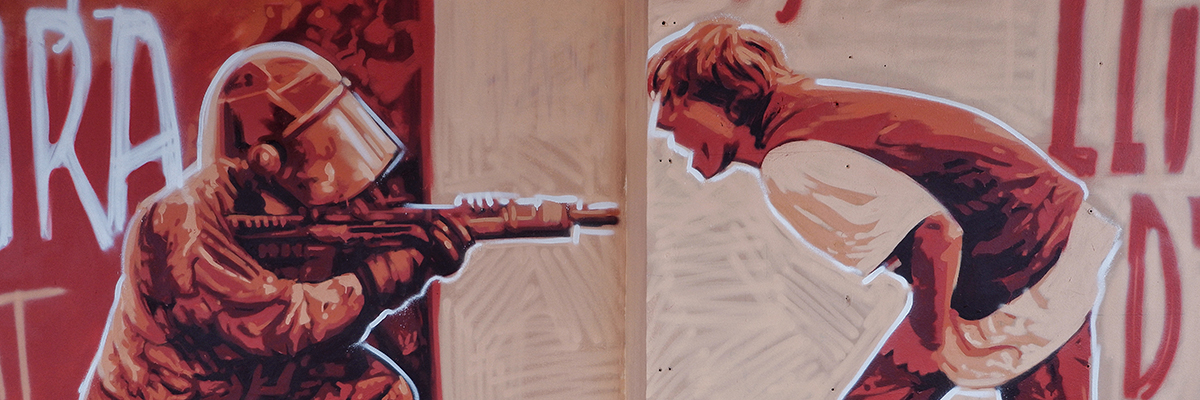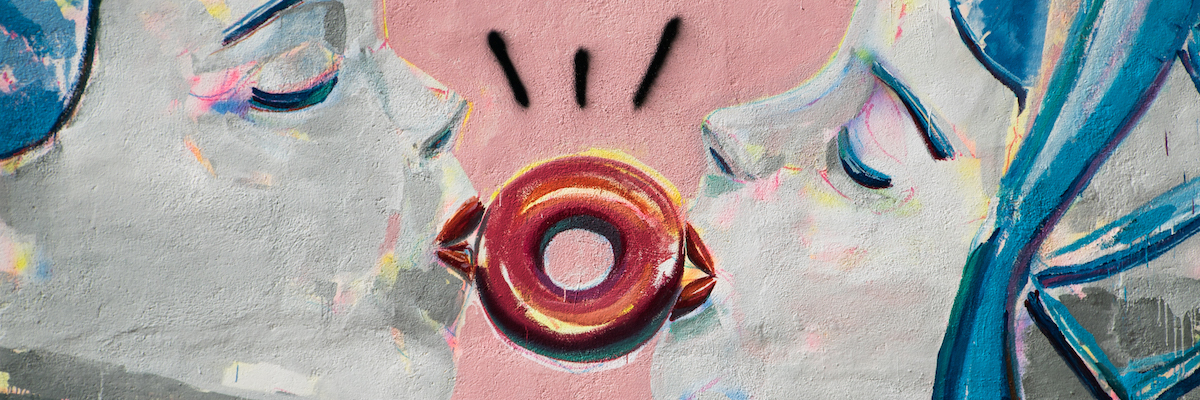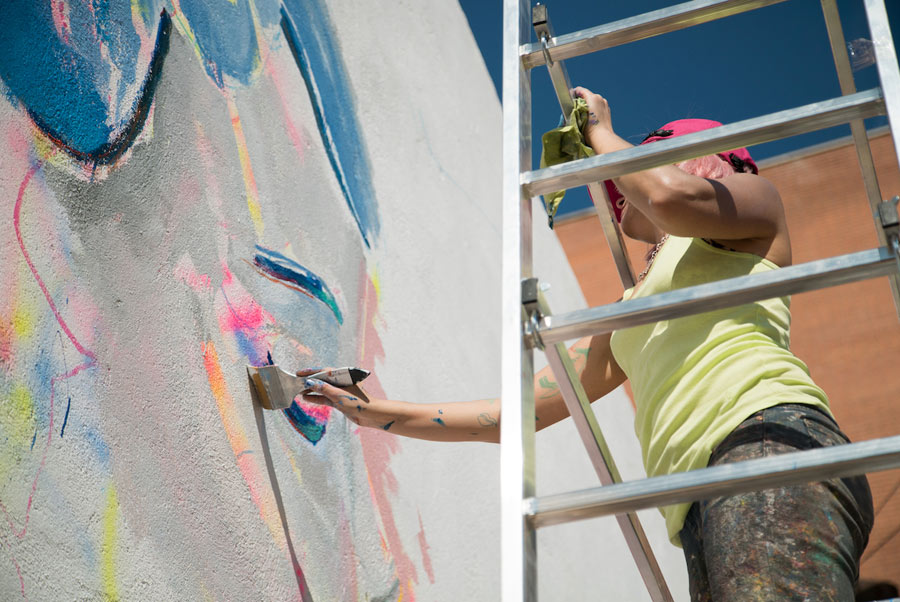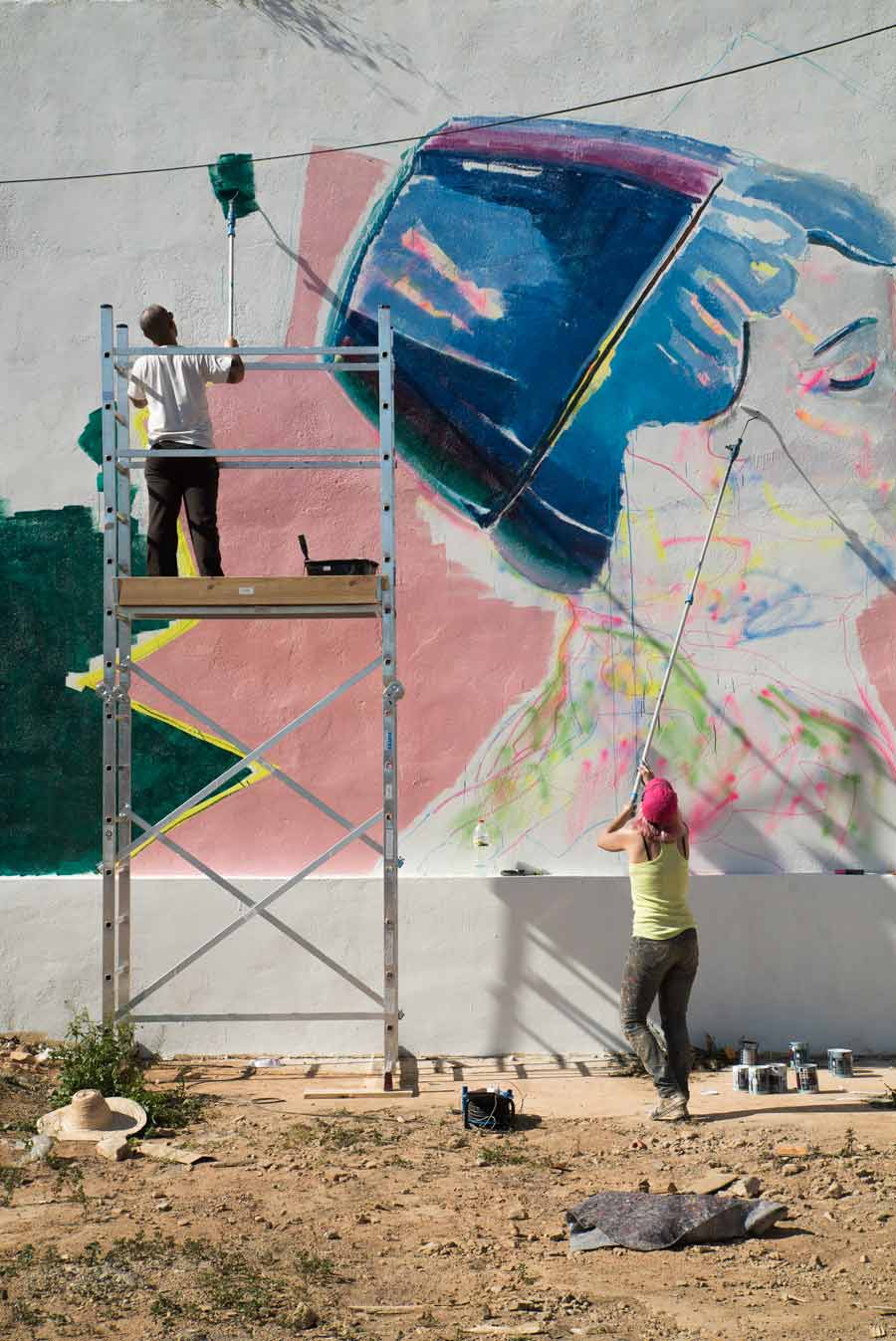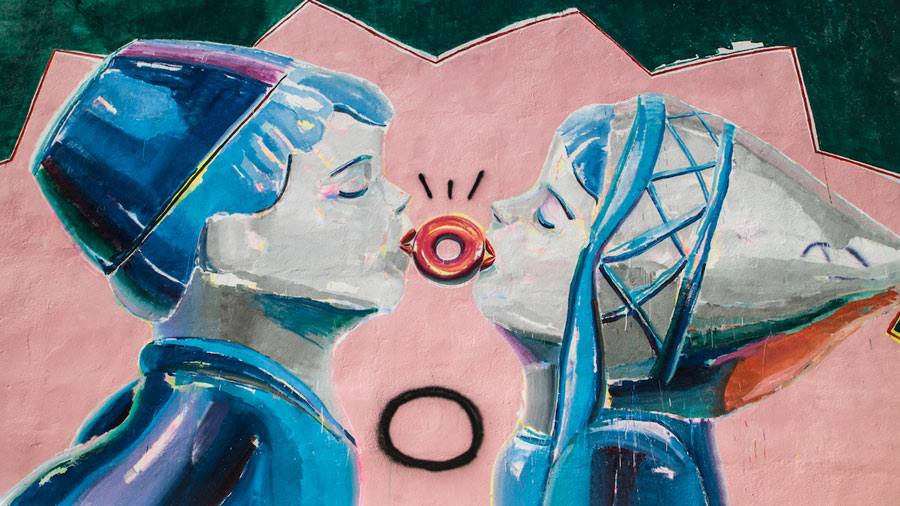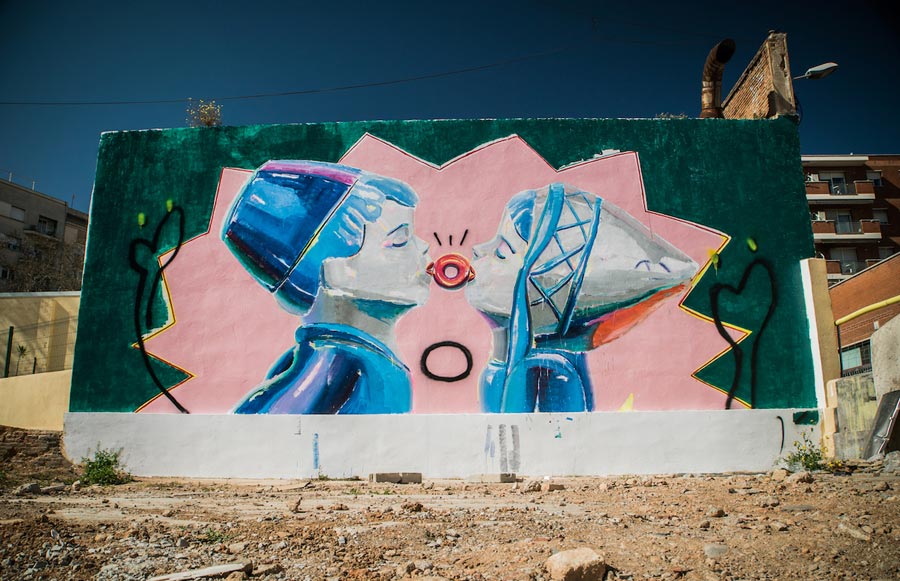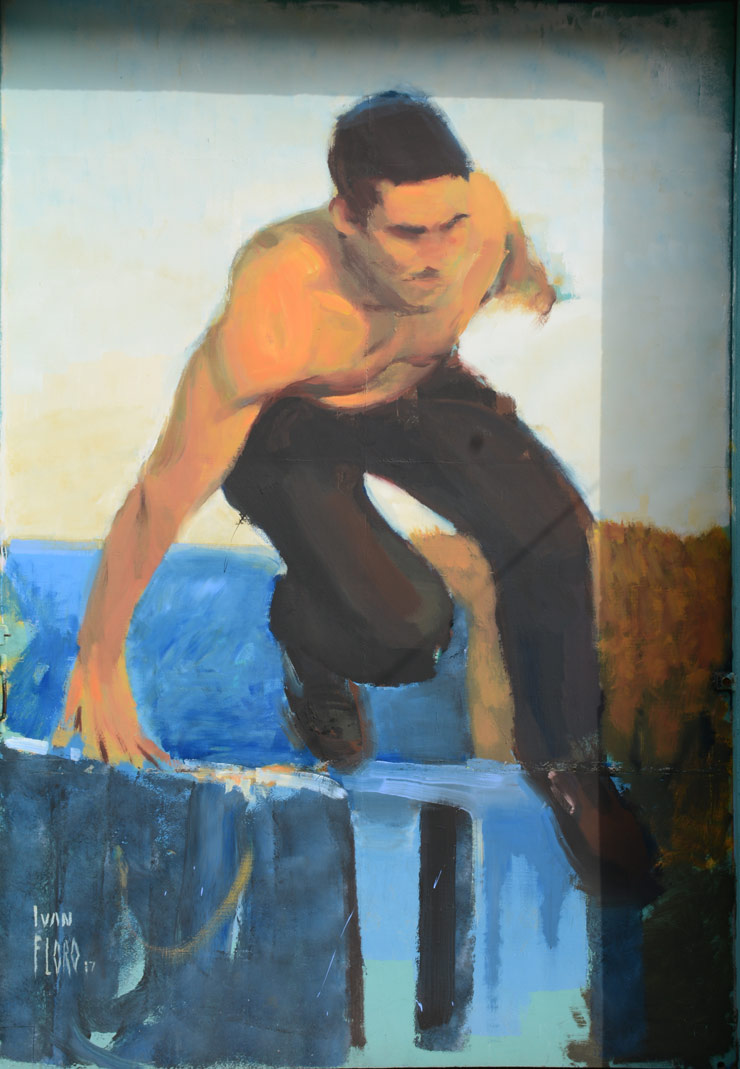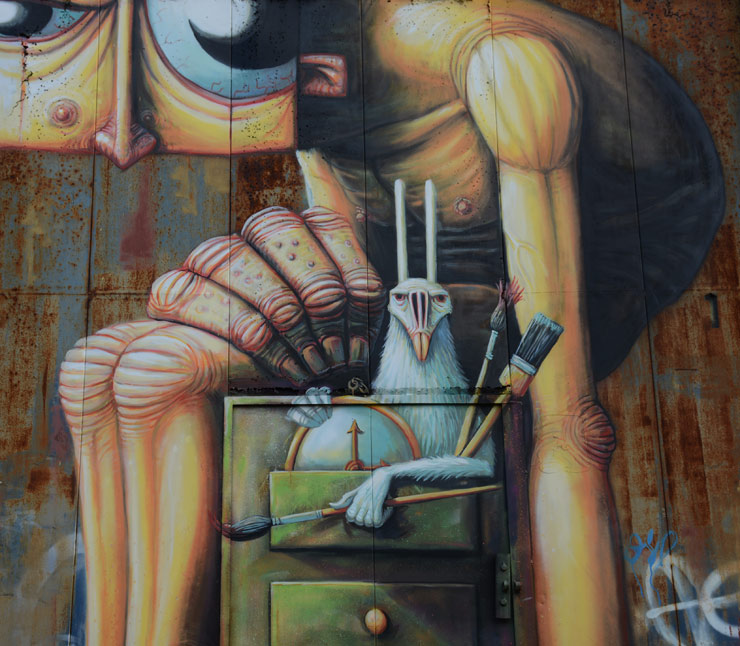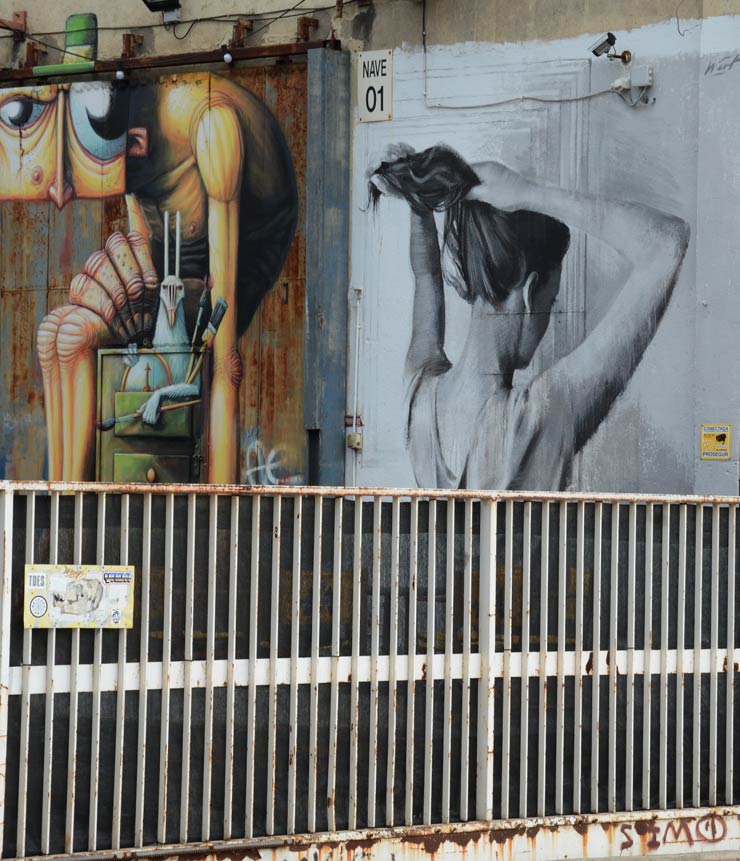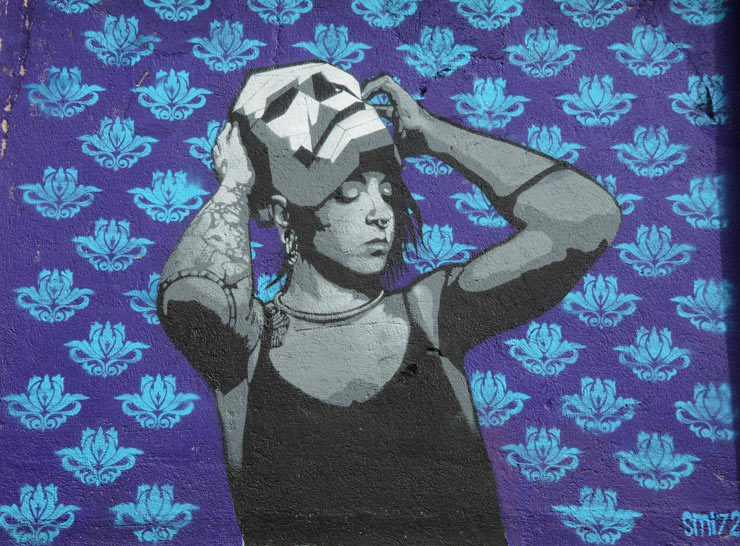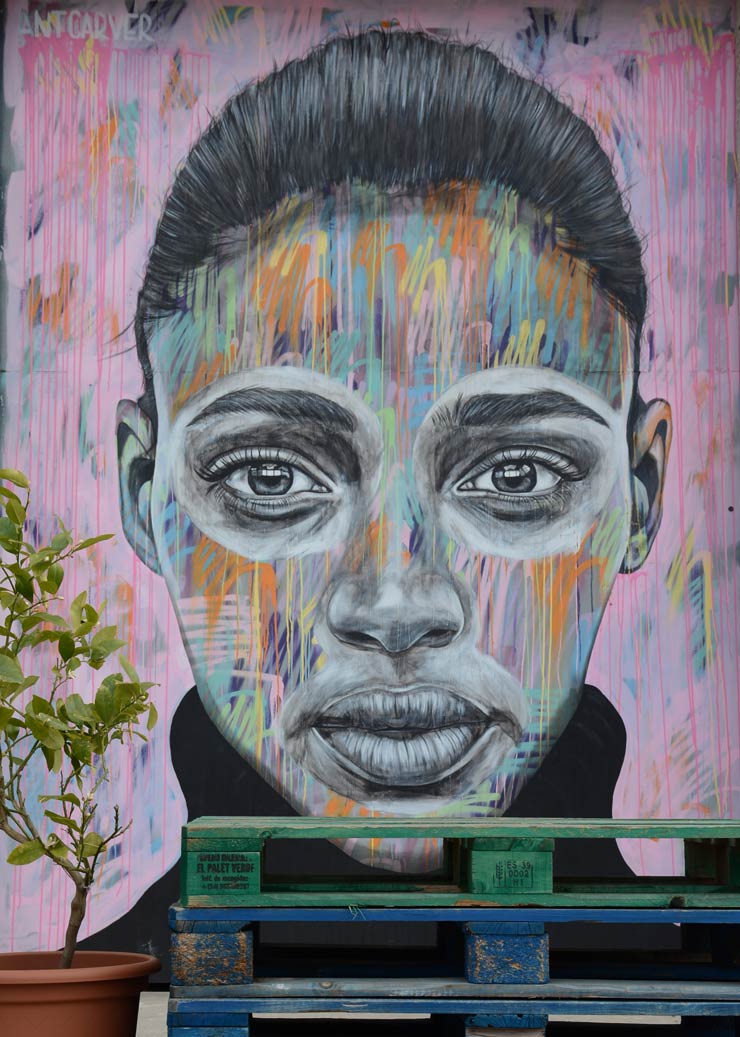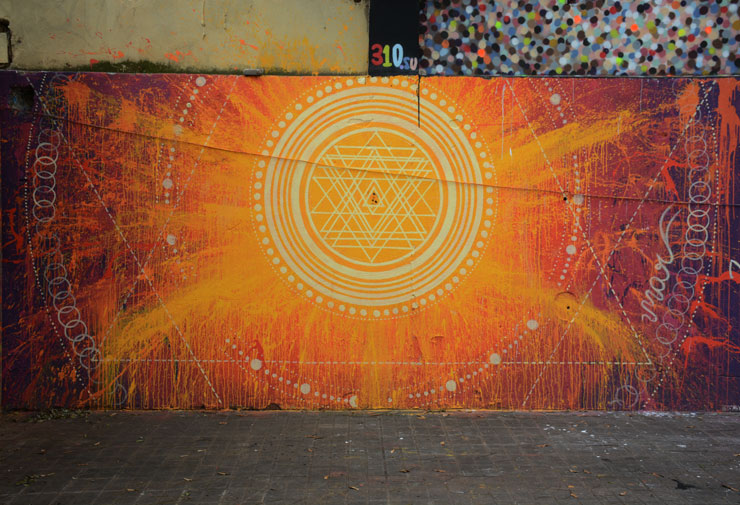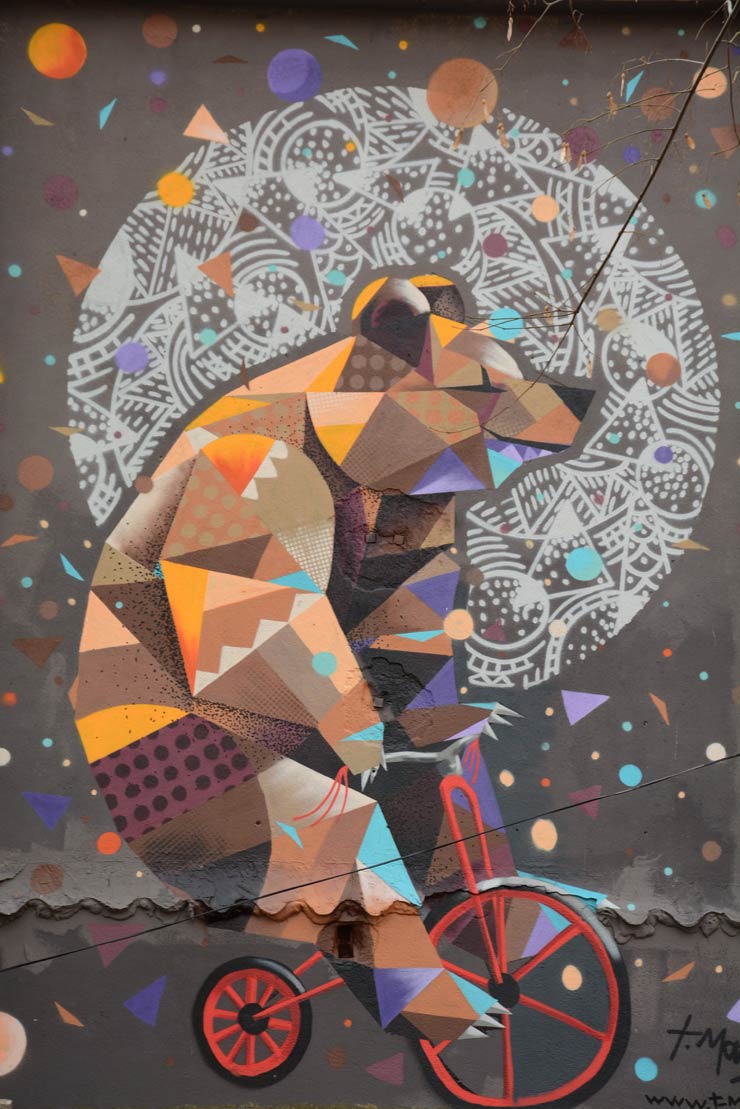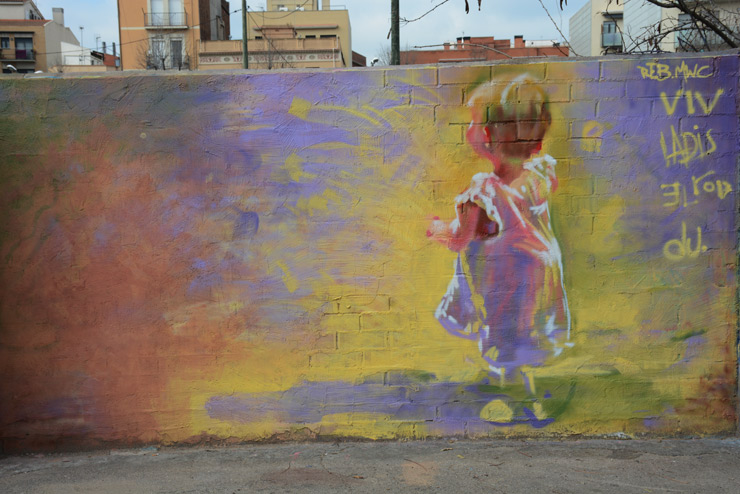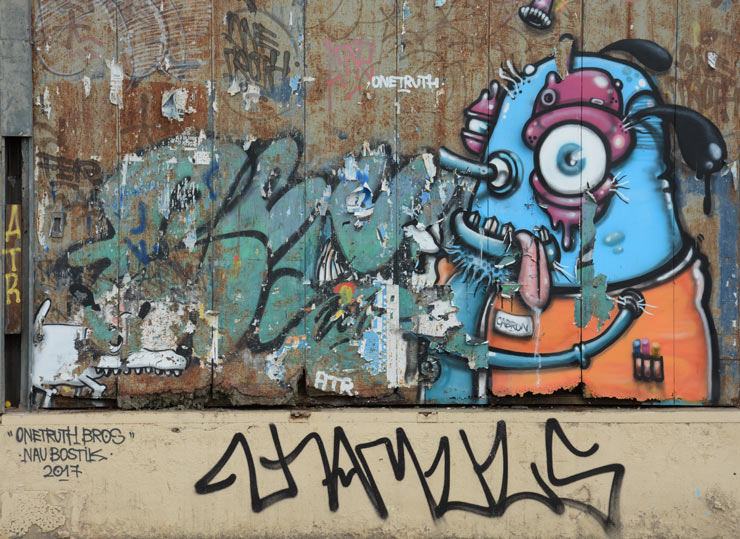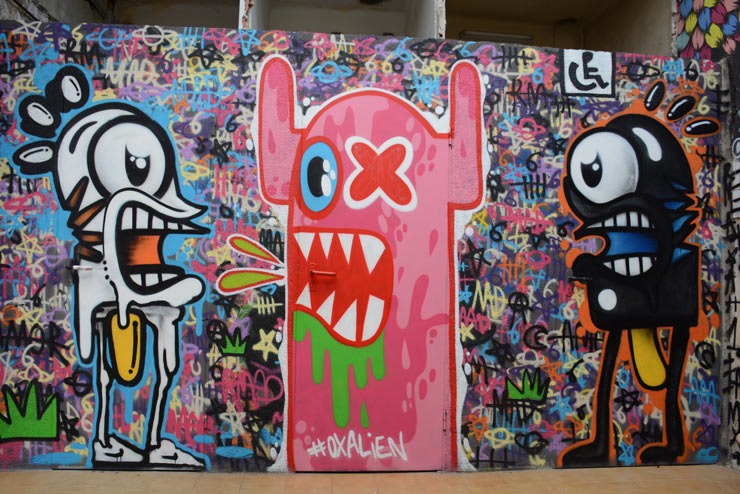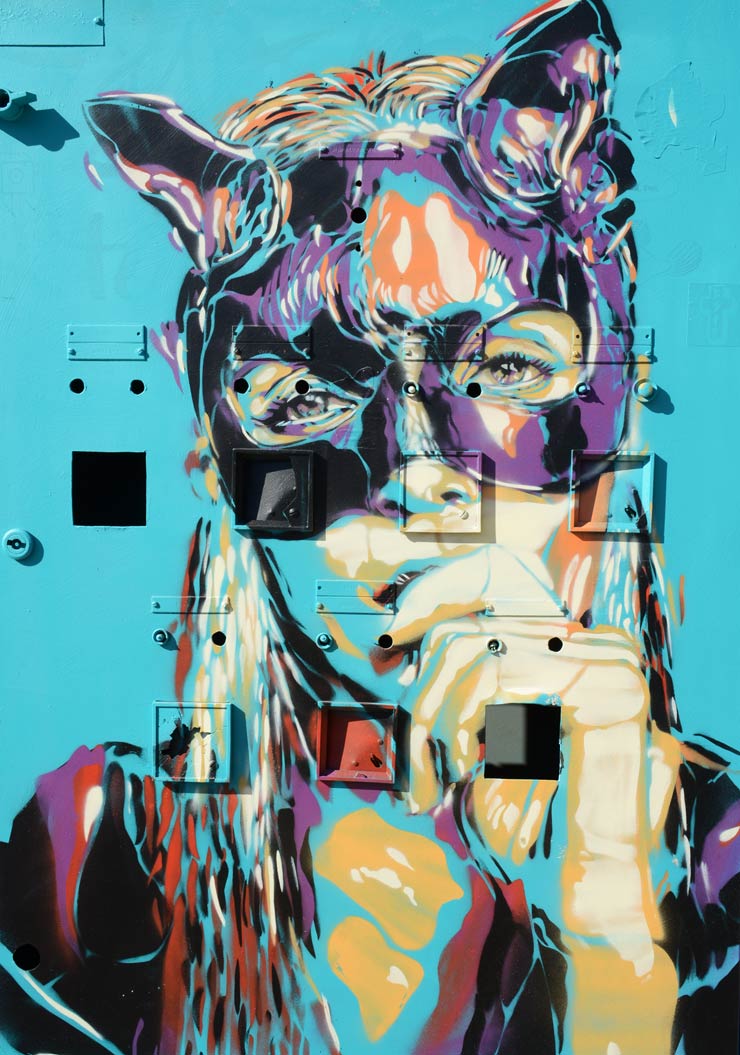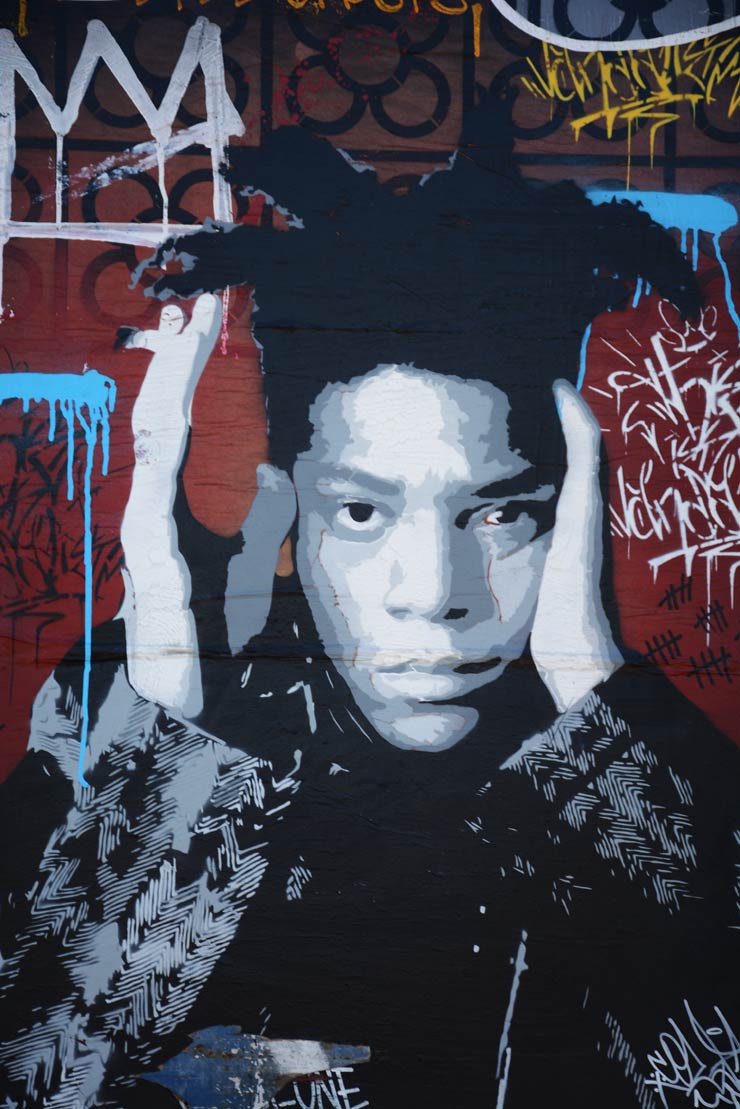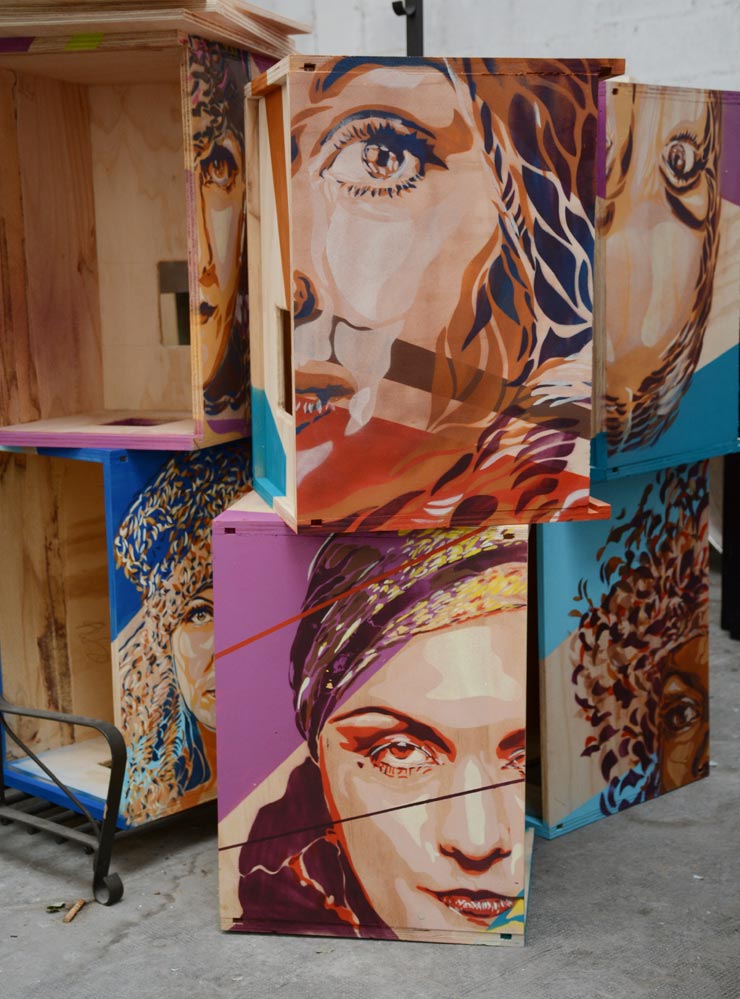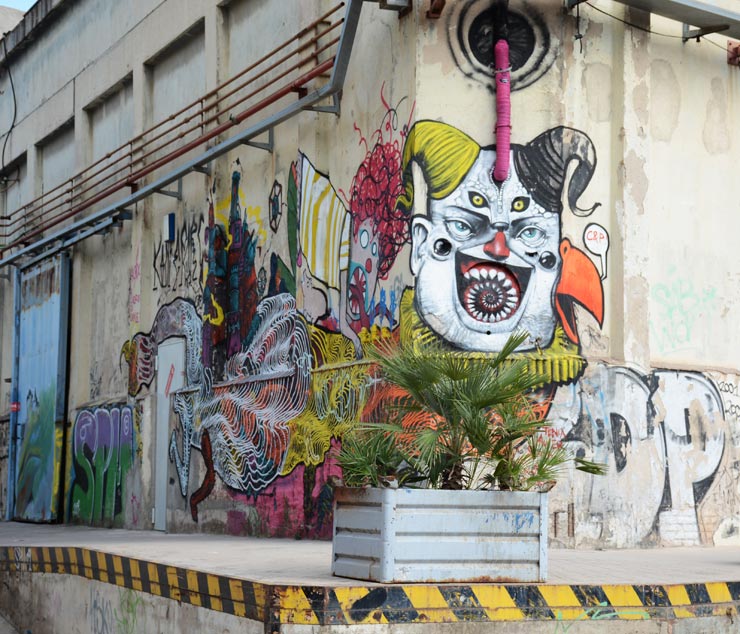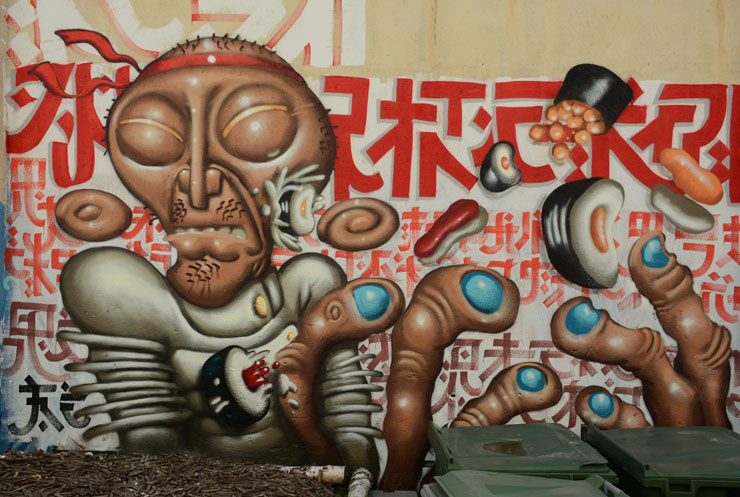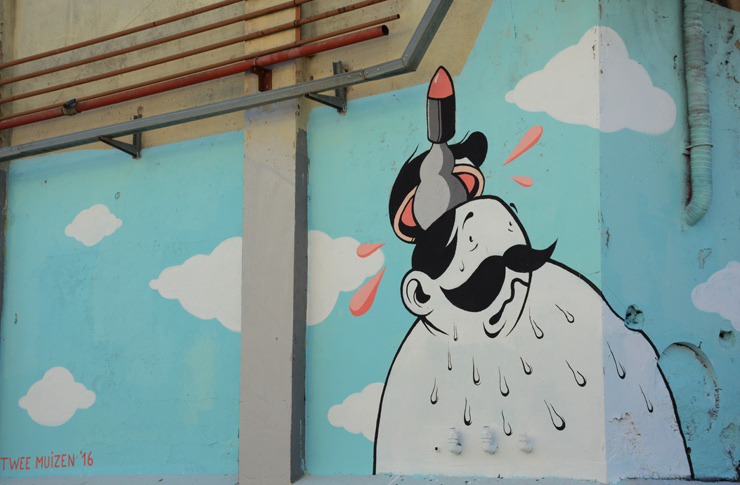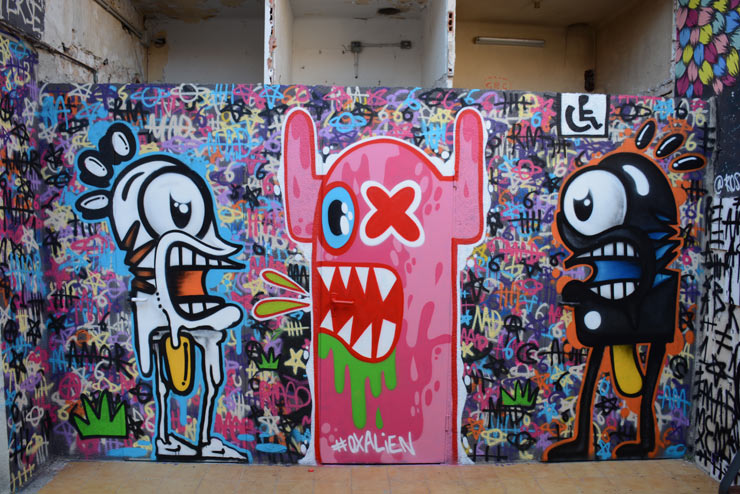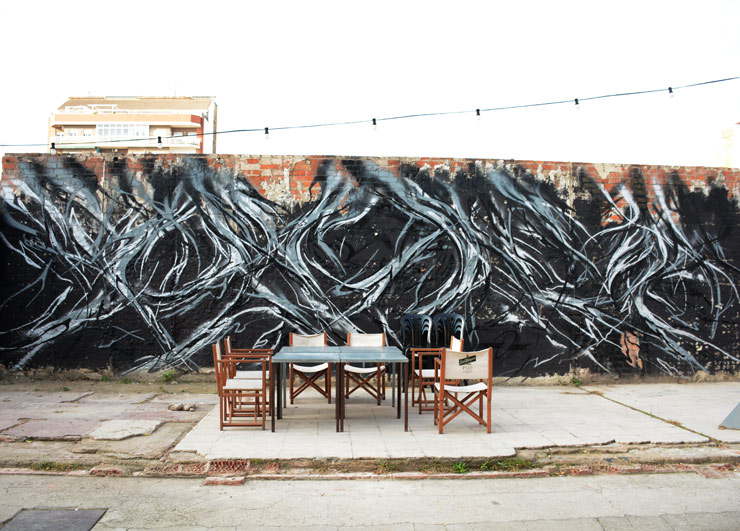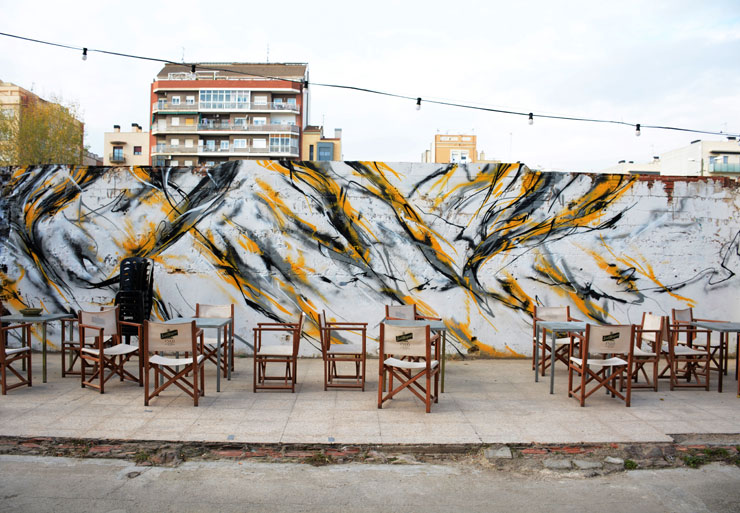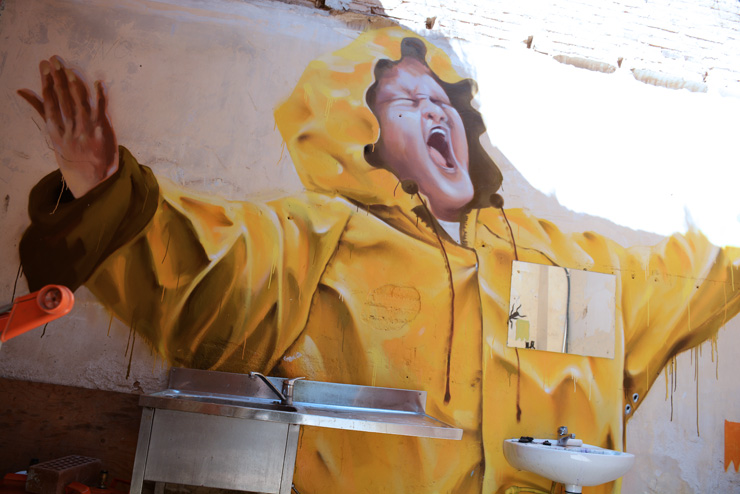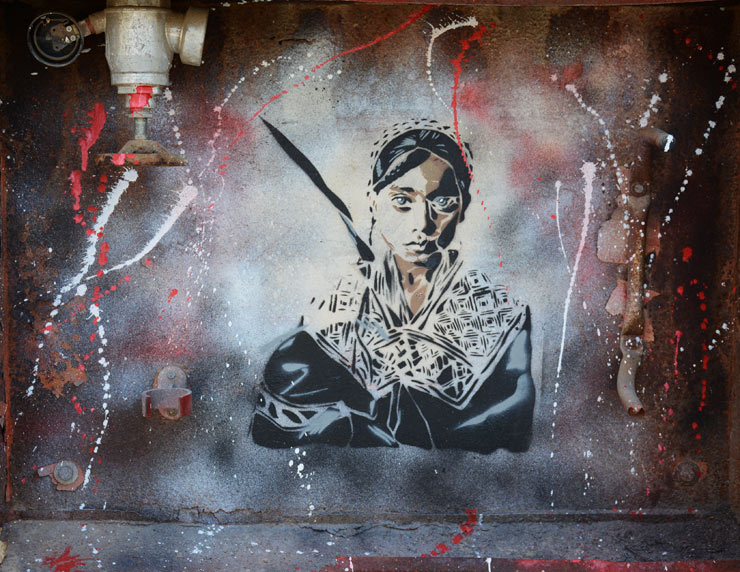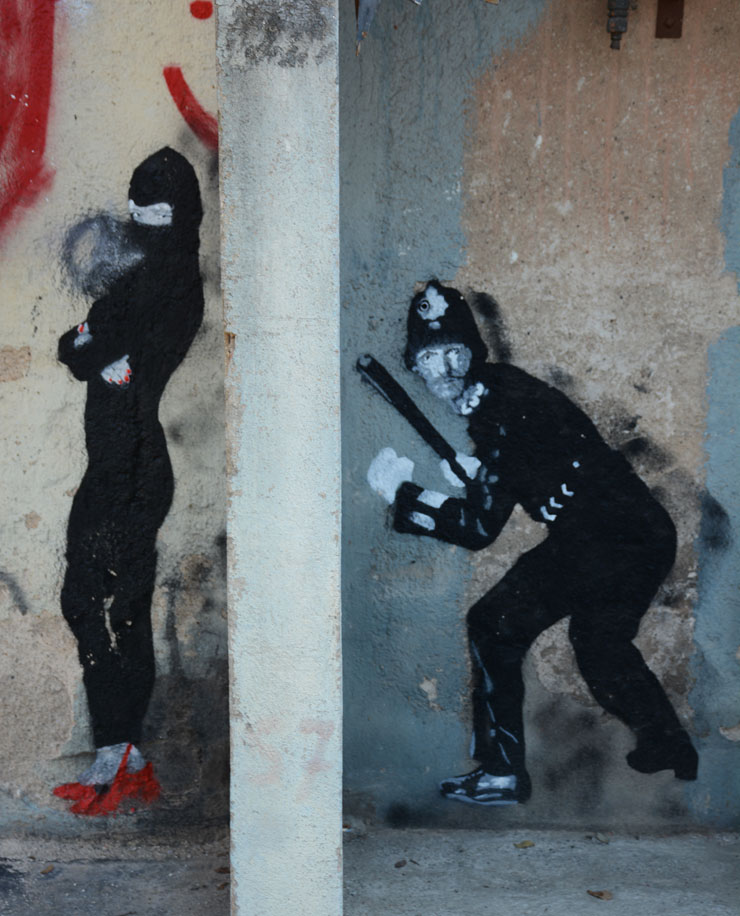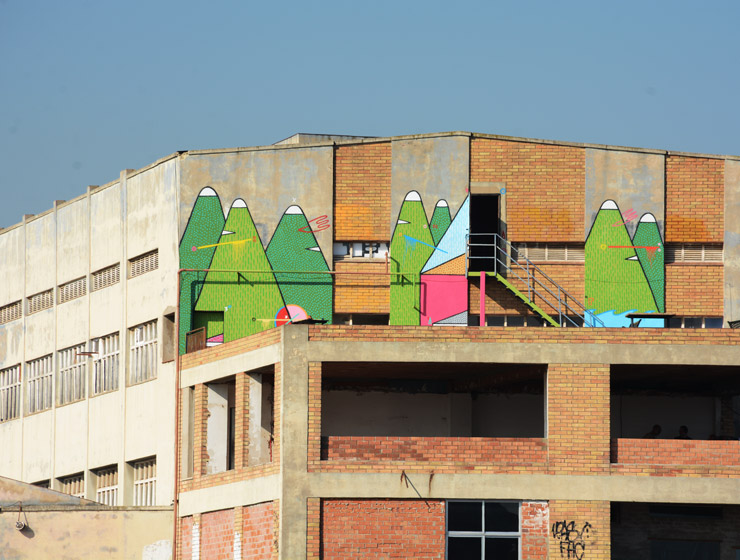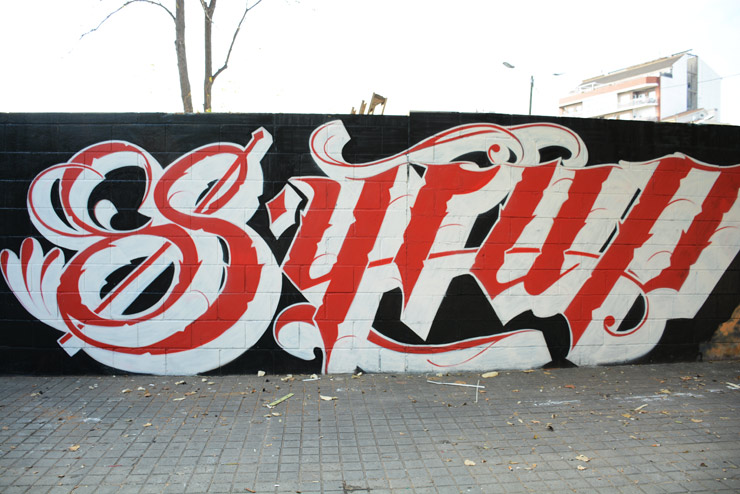Making art is brutal. Or can be. Ask Vermibus.
When the Street Artist is not taking over bus shelters and reconfiguring fashion ads into grotesque critiques of beauty culture, he has also been learning about analogic photography at Nau Bostik. The Barcelona-based cultural space has phenomenal education programs for artists to develop their skills with facilities equipped with one of the best photography laboratories in Spain.
But learning how to create a photographic print there kicked Vermibus’ butt – making him nearly quit in his pursuit to get it right.
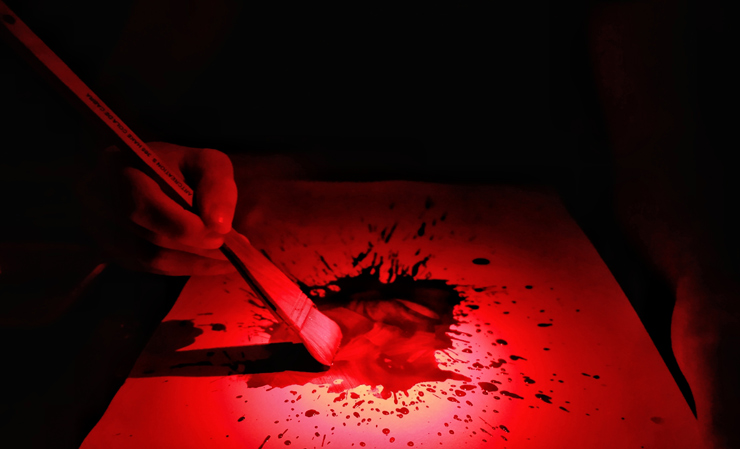
Vermibus “Brutally Human”. Nau Bostik, Barcelona. 2018. (photo © Fer Alcalá)
“One by one, the artist carefully applied liquid emulsion on sheets of 100% cotton paper of the highest quality. By contrast, the developer was applied with an expressive brush stroke, which makes each one of the pieces different and special,” says the official press release for the new print he created, called “Katherine.” It doesn’t say that he failed multiple times before he discovered that technique.
His perseverance is documented here on BSA today as photographer and cultural documenter Fer Alcala interviews Vermibus about his residency and the challenges he faced learning how to create this work.
Fer Alcala: So, you spent some weeks as a resident artist at Nau Bostik working on the Katherine print. At the same time, you were doing a workshop with some school students about adbusting, contrapublicity… Which came 1st: the creative process of the print, or having to do the workshop, where you ended up with the idea of developing Katherine at Bostik?
Vermibus: The print and the workshop were two completely different projects that took place at the same time. I was invited by Xavier Ballaz, from Difusorbcn, to give a two month workshop in Barcelona about counter-advertising from the feminism and gender theories perspective.
The challenge was to find a place where to live and work during this time in Barcelona, that’s how the art residency at Nau Bostik came across.
I was supposed to have a room and a studio there but, because of the characteristics of my materials (the solvents) we couldn’t figure out where to install it. So, I had to approach the residency in a different way.
Fortunately, Nau Bostik has an important relation with analog photography and also they have one of the biggest photo-laboratories from the country “La Perversa”. It was impossible not to feel inspired by this place.
Adapting my needs to the situation I end up develop my last print there.
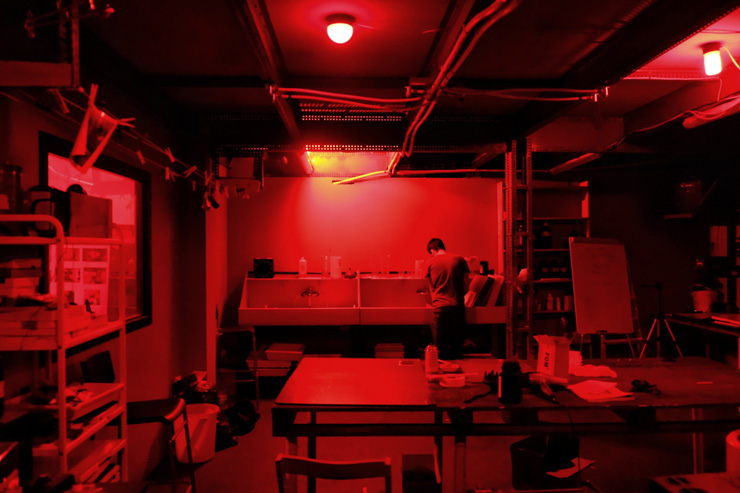
Vermibus “Brutally Human”. Nau Bostik, Barcelona. 2018. (photo © Fer Alcalá)
Fer Alcala: If I’m not wrong, you’ve launched 3 prints to date, using a different technique in every one of them. Could you tell us a little bit about all this and how you have chosen each process? Is it kind of a challenge for you? Is it a matter of not repeating yourself?
Vermibus: After trying them, I think other artists can profit more from techniques like giclée and screenprinting than I.
When I’m creating, I like to have an experience and I want this one to be reflected in the final work. At the same time, I’m interested in the investigation and the developing of techniques that break boundaries and open new or forgotten paths. 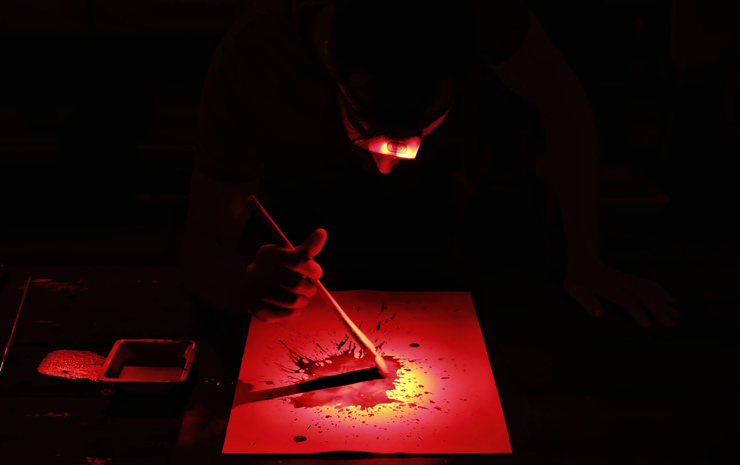
Vermibus “Brutally Human”. Nau Bostik, Barcelona. 2018. (photo © Fer Alcalá)
Fer Alcala: I had the chance of spending some time with you at the laboratory witnessing the developing of Katherine. I have to say that it was a very delicate, technical and magical process. Did you have to learn this technique from zero? What was the most stressful part of it? Did any ideas about quitting the project come to your mind?
Vermibus: I knew the very basics of analog photography and I knew what I wanted to do but I had to learn how to do it, almost from zero.
Of course, I had all the problems someone could have in a laboratory, literally every single one of them.
To be in a dark-room for long periods of time, when things are not going good can be devastating. The idea of quitting came to my mind many times.
But from my experience, when nothing is working and you are close to let it go is when magic happens. During the last week of the art-residency I found out that the main problem was the composition of the paper, so I decided to give a last push and I got a beautiful top quality paper that was decisive in the production of the print.
In the end, I could have everything ready on time with the results I wanted from the beginning.
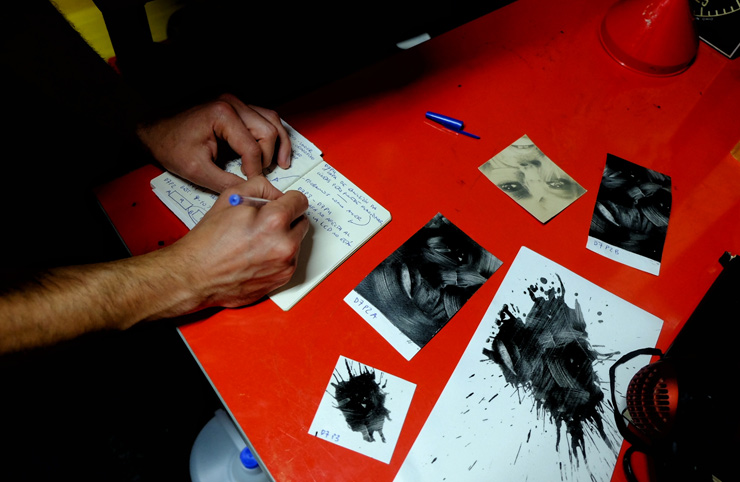
Vermibus “Brutally Human”. Nau Bostik, Barcelona. 2018. (photo © Fer Alcalá)
Fer Alcala: Once Katherine was produced, you showed it in the exhibition context during Moniker Art Fair London. After all the hard work, were you happy with the results and the feedback you got from attendants, collectors, other artists?
Vermibus: The moment of showing your work is when all the pain has passed and you can enjoy. I really believe Brutally Human is the best collection of works I have done until now. The feedback was great, so it seems like the people enjoyed it too.
Fer Alcala: Is there any way to still get it?
Vermibus: I think Moniker Art Fair still have some prints left.
Fer Alcala: I would like to ask you a couple of things apart from the creative process of Katherine. I think that, while you were doing the workshop at the school, working on issues as beauty, the role of women in advertisement, gender… the La Manada rape media coverage was at its height. Did it influence the way you approached the work with the students?
Vermibus: Working with kids is something that I didn’t do before, so my approach towards the students, the profession and of course it was taken with massive respect.
I was preparing the lessons with a lot of care but adapting myself and the content to the needs of each moment So, what happened during that time with La Manada was the worst that could have happened to the girl, to her family and to womens rights in general but perfect to make young people understand the importance of respect and empathy.
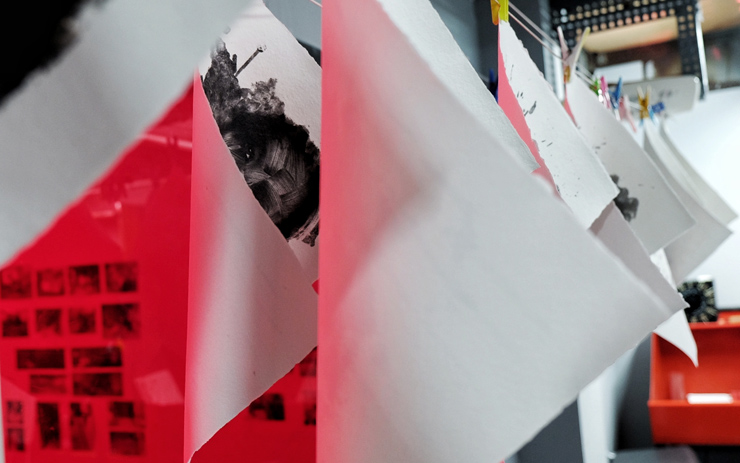
Vermibus “Brutally Human”. Nau Bostik, Barcelona. 2018. (photo © Fer Alcalá)
Fer Alcala: You are developing your own solvent, which I think is great. Could you explain to us why you have decided to do it and give us some tips about the technical side of it?
Vermibus: Together with Elena Gayo, a renowned conservator and restorer from Spain, I’ve been developing my own solvent.
The idea had different goals: reducing toxicity, gaining molecular stability and understanding better my technique to be able develop it.
After months of work and infinite setbacks (similar to the process of the print) I found the correct proportion of “ingredients” to create my own solvent.
Visually speaking it leaves the painting slightly smoother than the old solvent and the molecular structure is much more stable because I control the ingredients. Also, I can modify the mix because I understand what each of the solvents does individually and all together.
But the most important is that we could reduce the toxicity drastically, from a commercial solvent that was carcinogenic, neurotoxic, mutagenic and reproduction-impairing to a solvent that produces no irritation through skin contact and inhalation. And that’s a big deal.
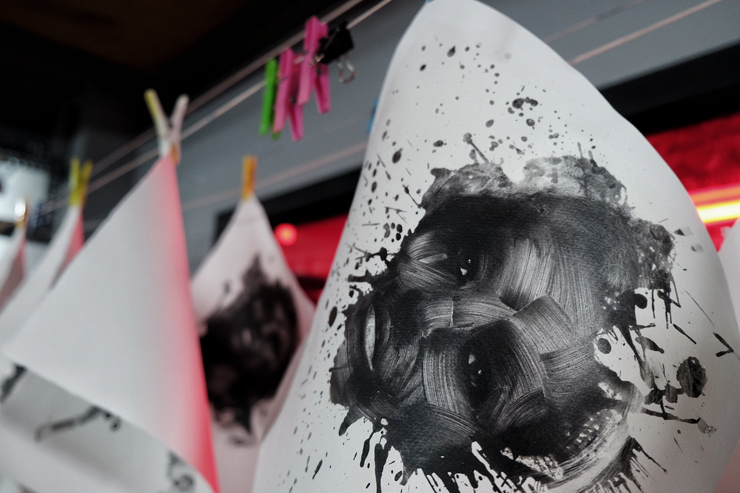
Vermibus “Brutally Human”. Nau Bostik, Barcelona. 2018. (photo © Fer Alcalá)
Fer Alcala: Is it something that you are doing for yourself or are you planning to produce it and sell it at a larger scale?
Vermibus: The solvent is absolutely adapted to my needs but who knows, maybe one day…
Fer Alcala: Tell us about your plans for 2019
Vermibus: 2018 has been a very decisive year. I spent most of my time reflecting on what I’m doing and why I’m doing it, but specially with who I’m working with and with who I’m not.
I have learned a lot this year and 2019 will be the moment when all what was learned will start to materialize. That’s all I can say for now.
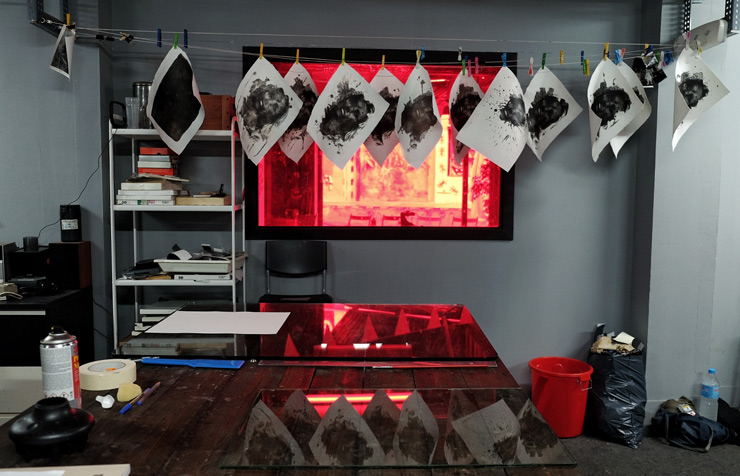
Vermibus “Brutally Human”. Nau Bostik, Barcelona. 2018. (photo © Fer Alcalá)
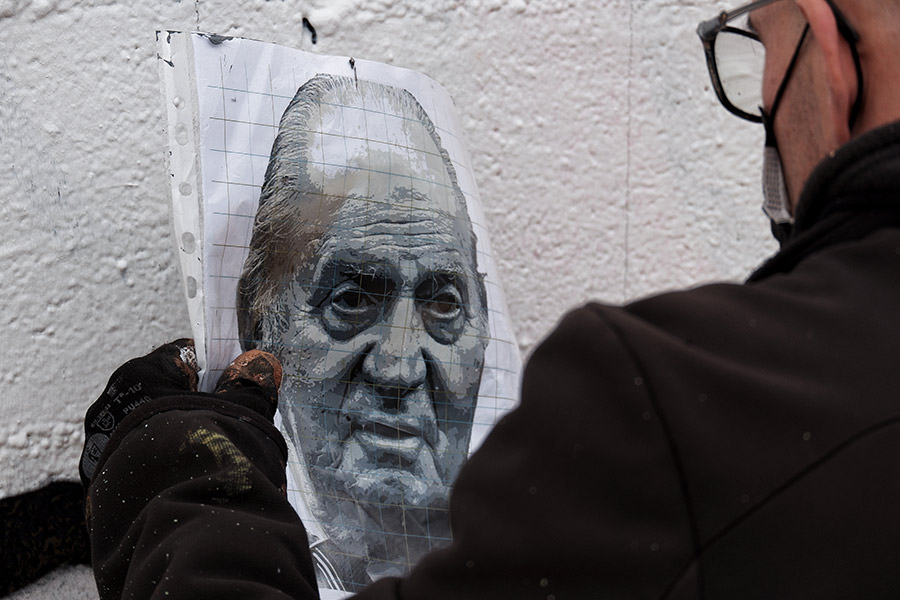
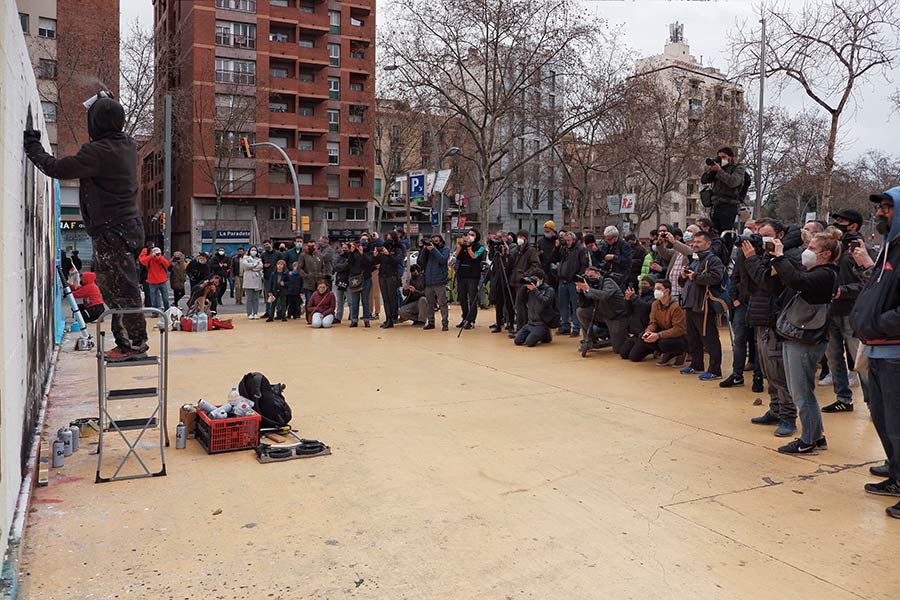
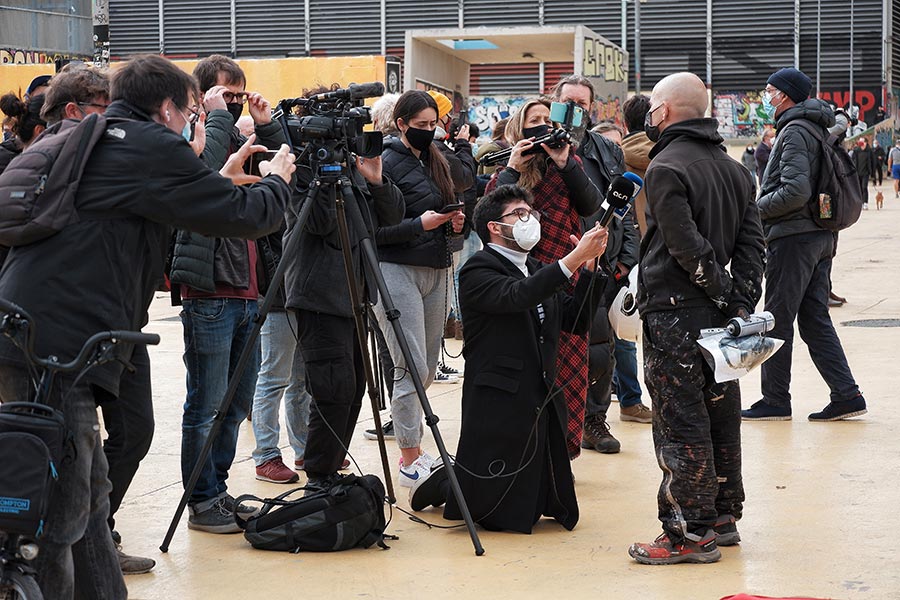
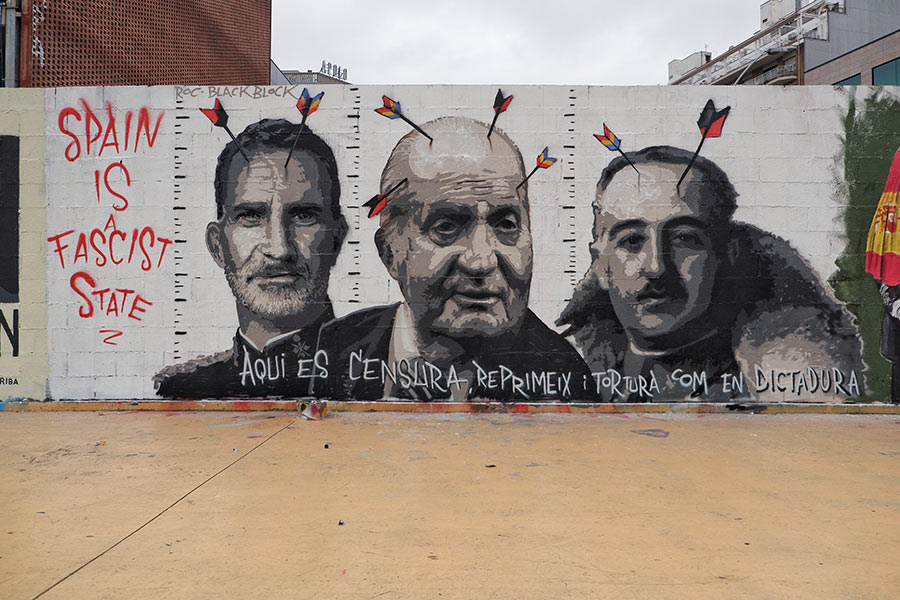
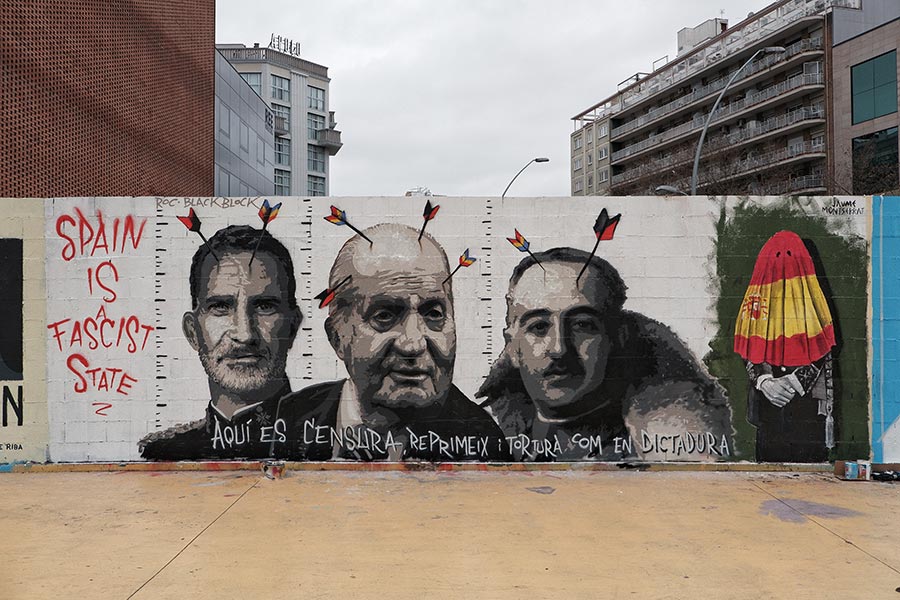
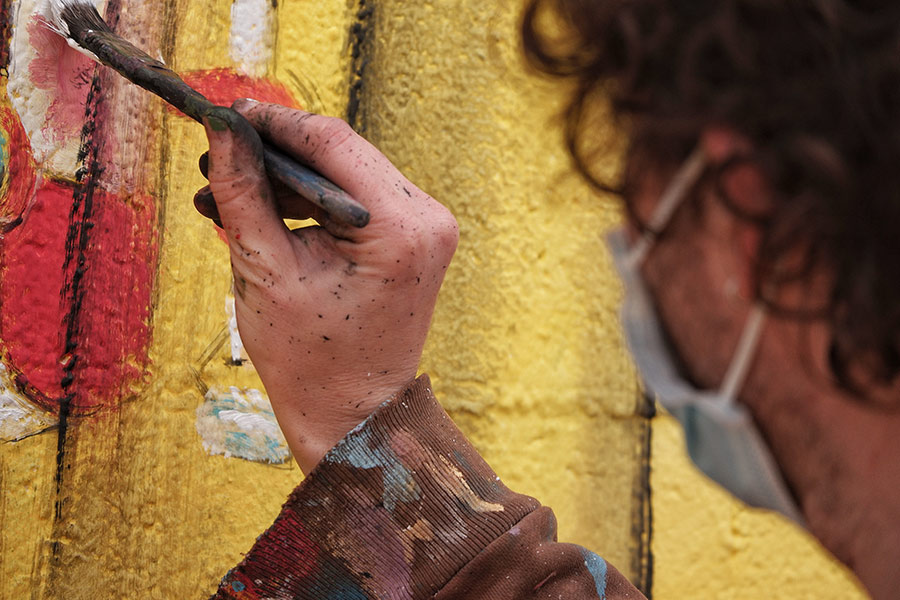
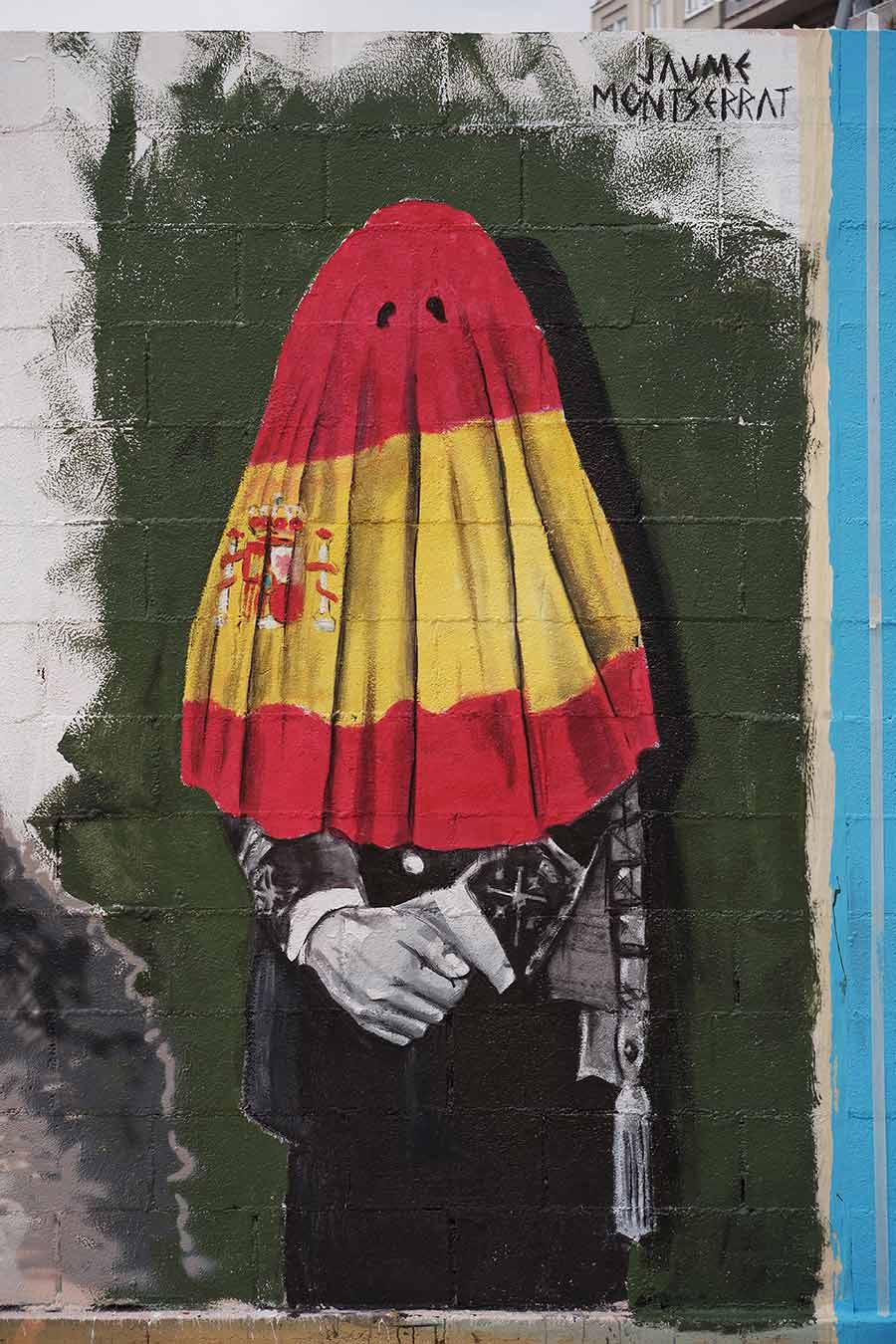
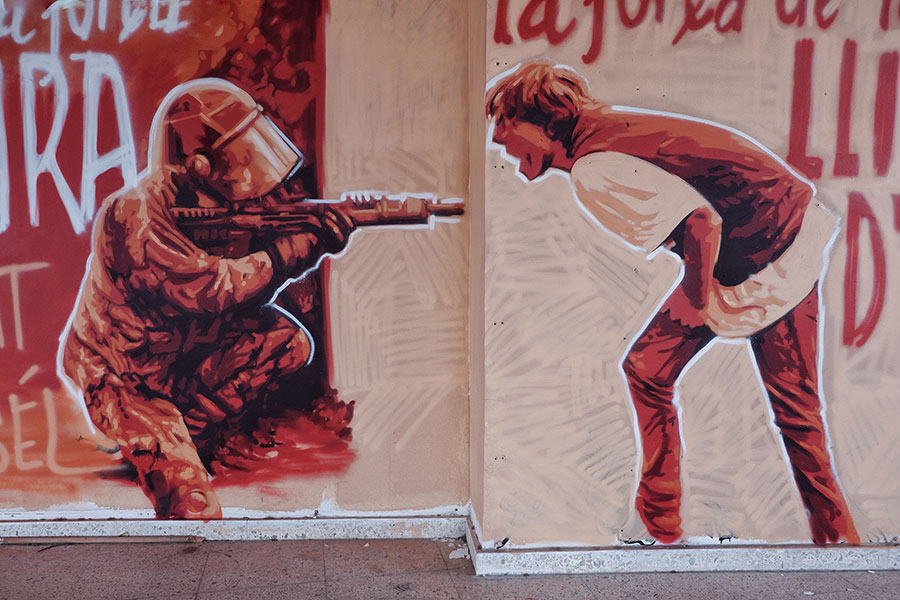
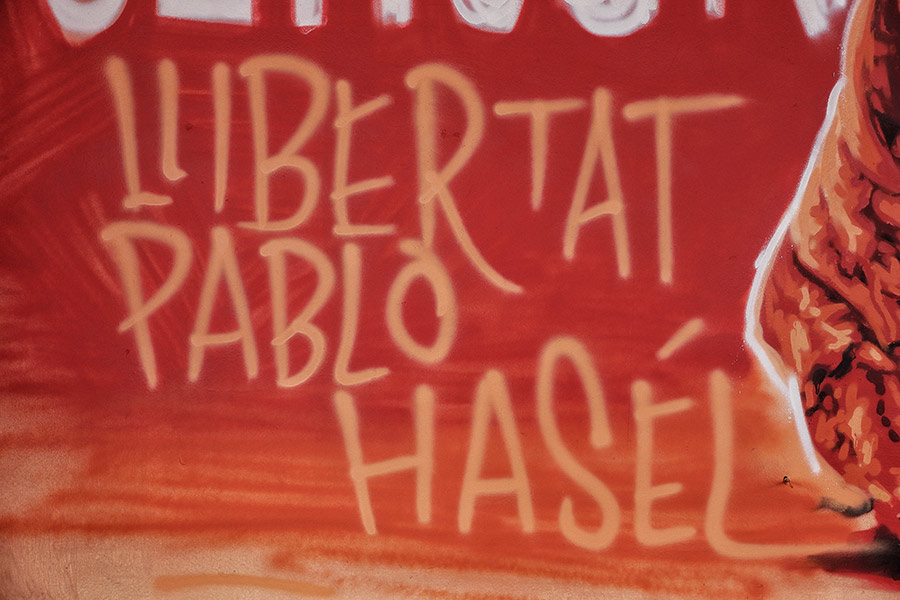
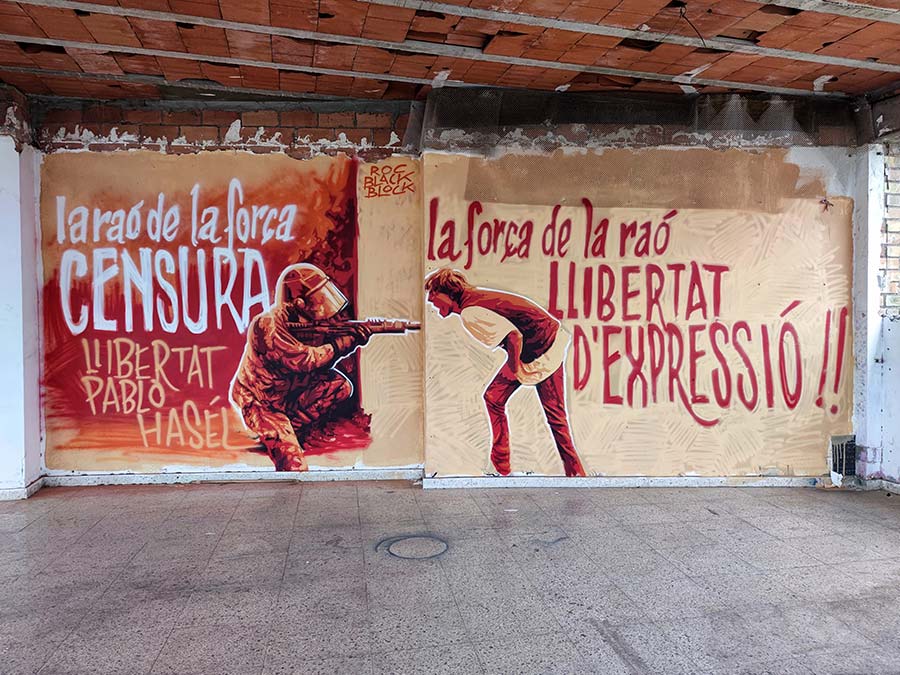
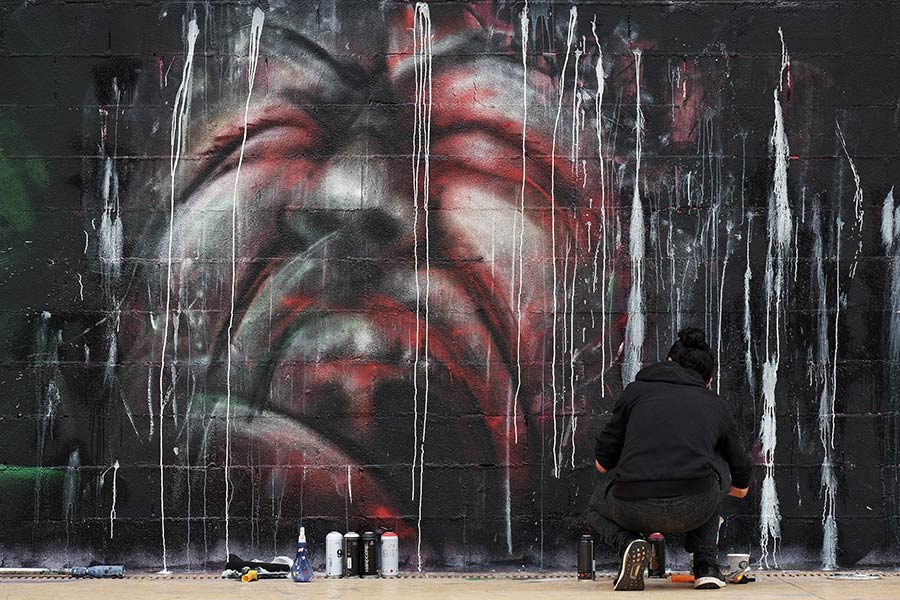
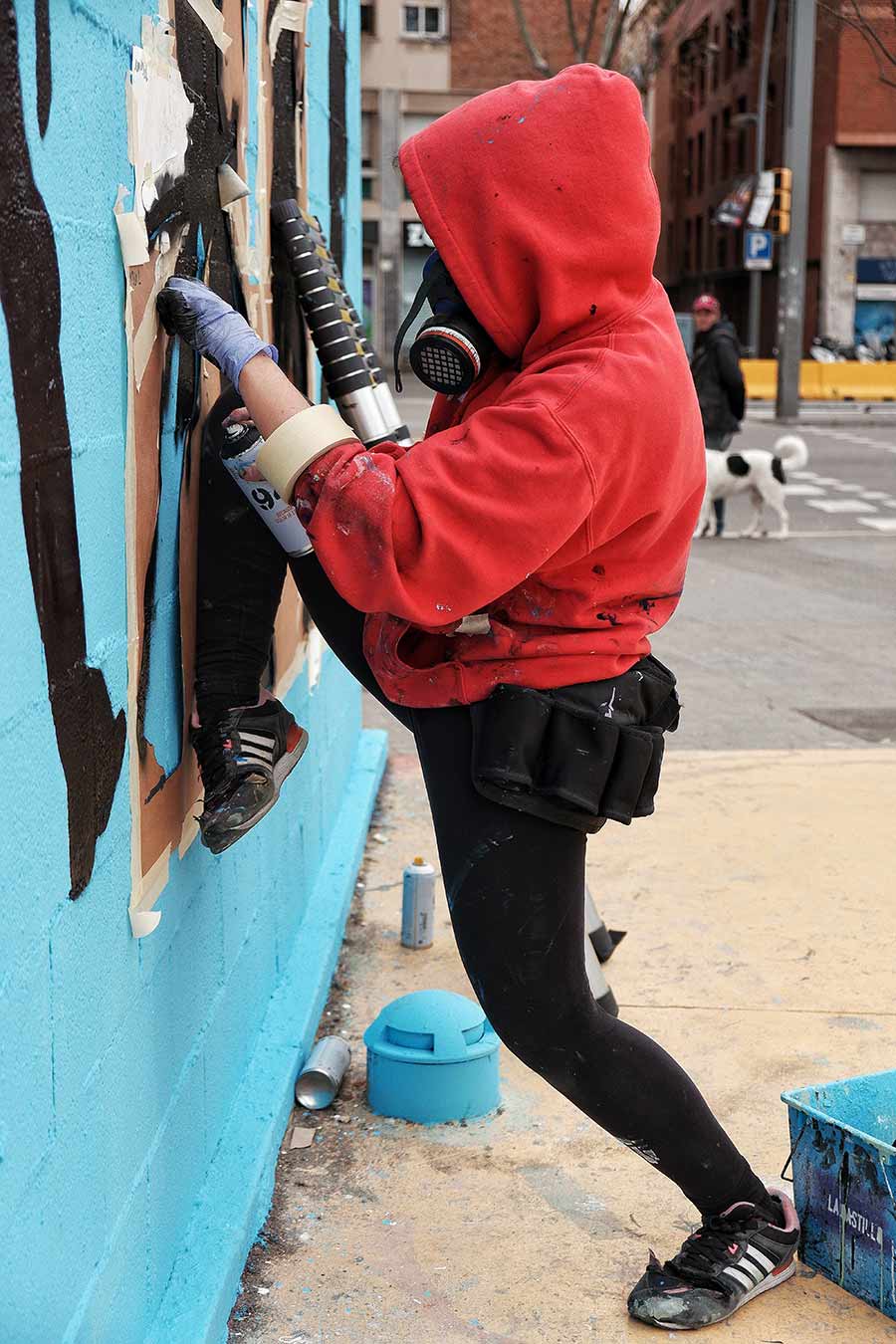
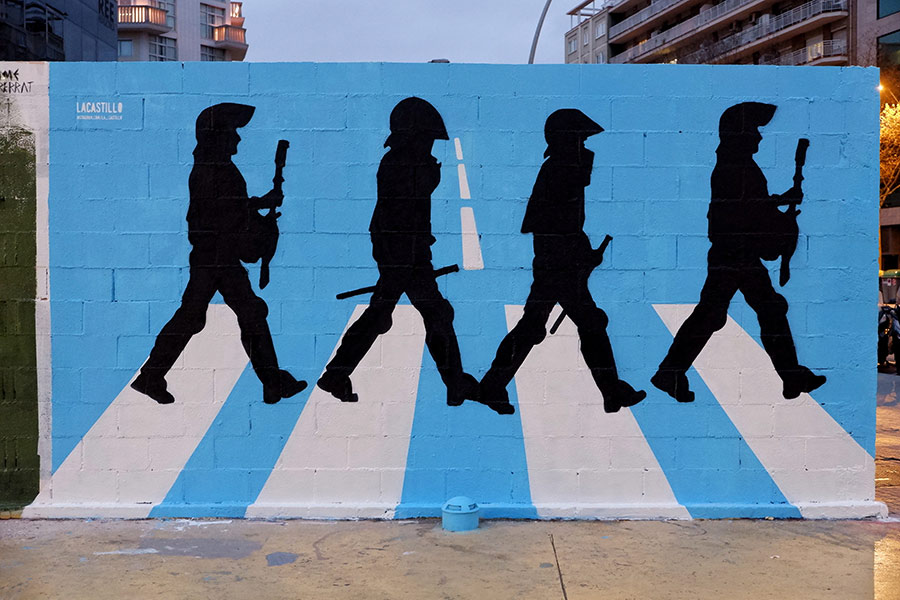
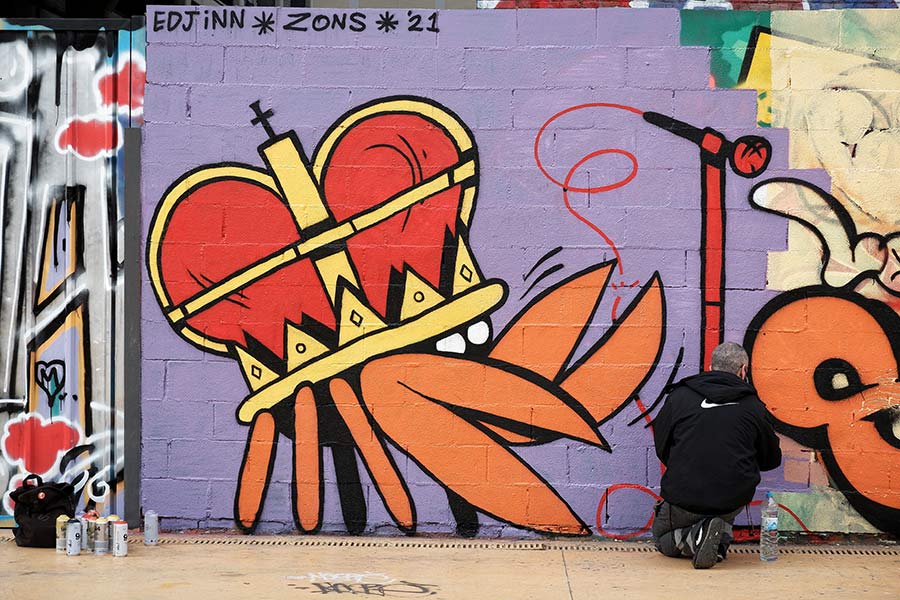
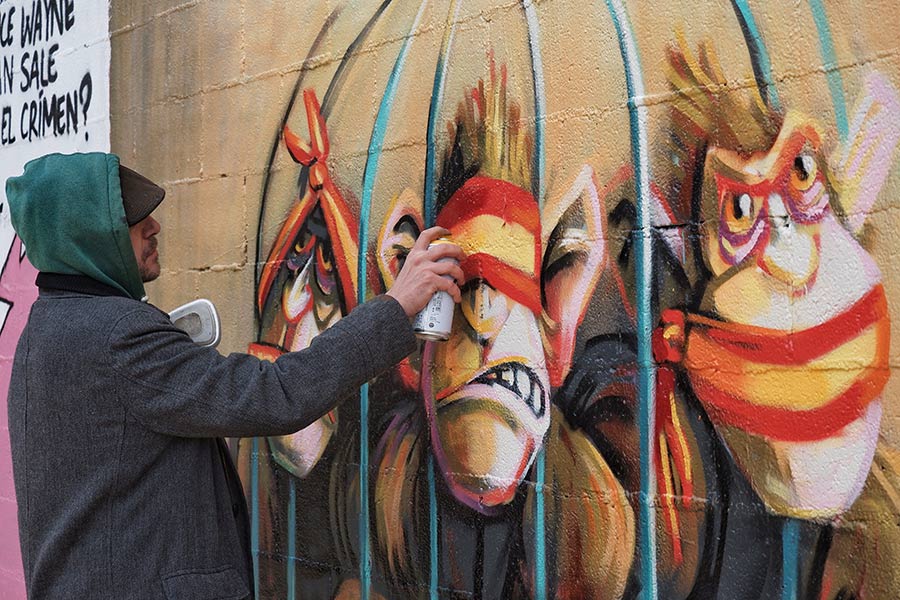
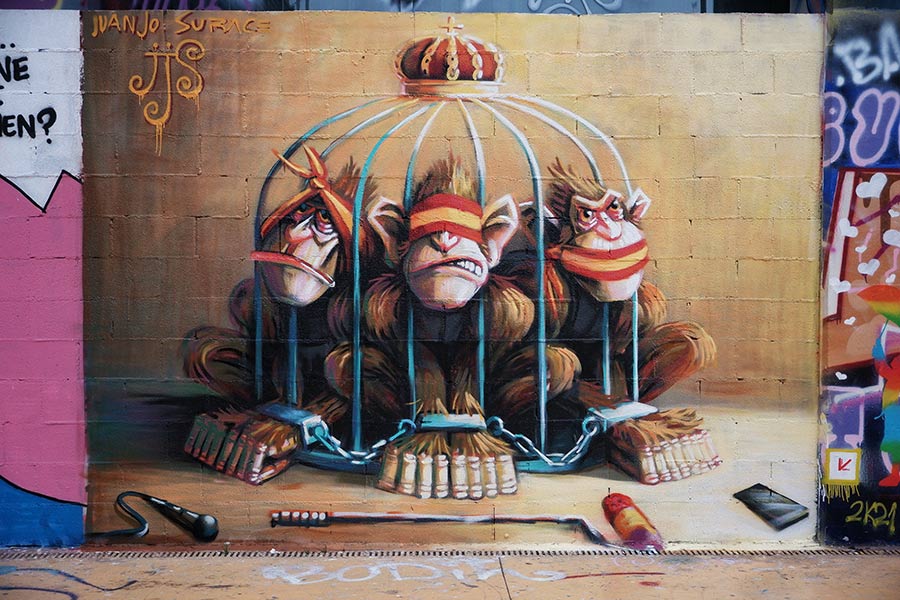
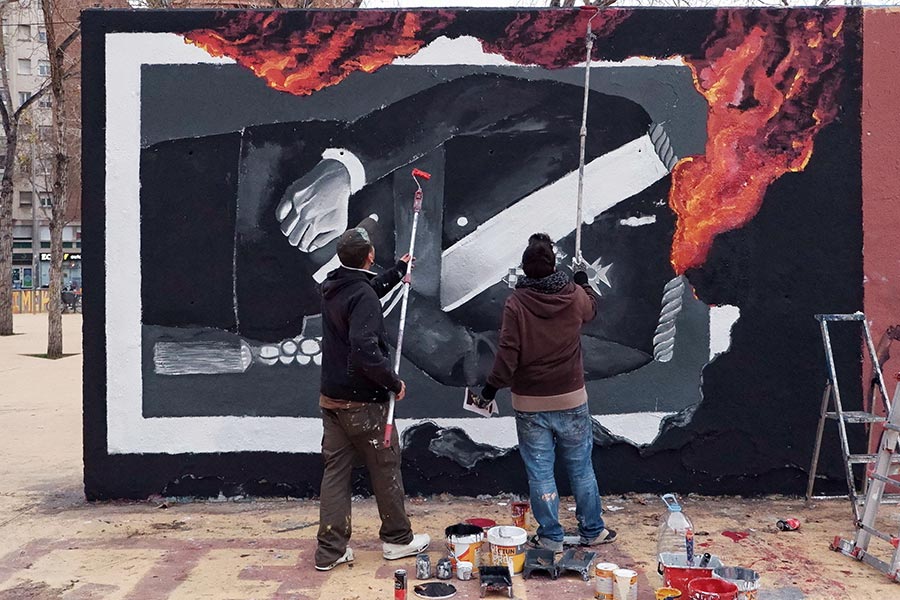
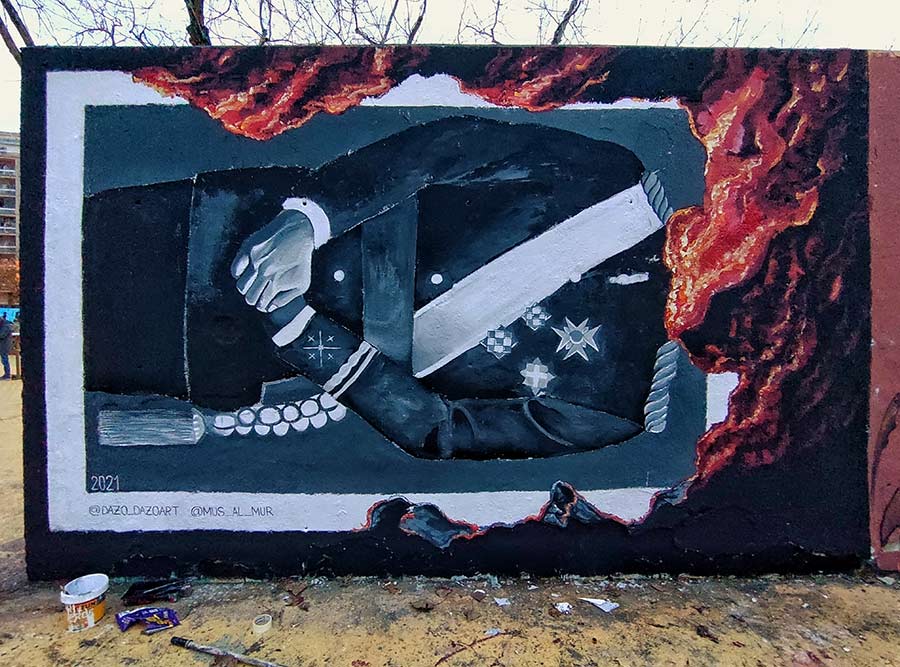
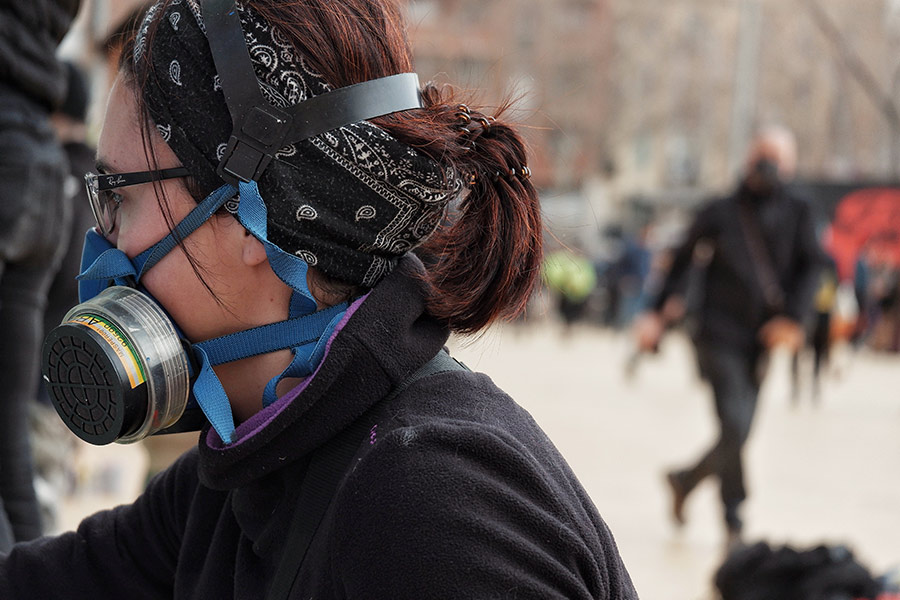
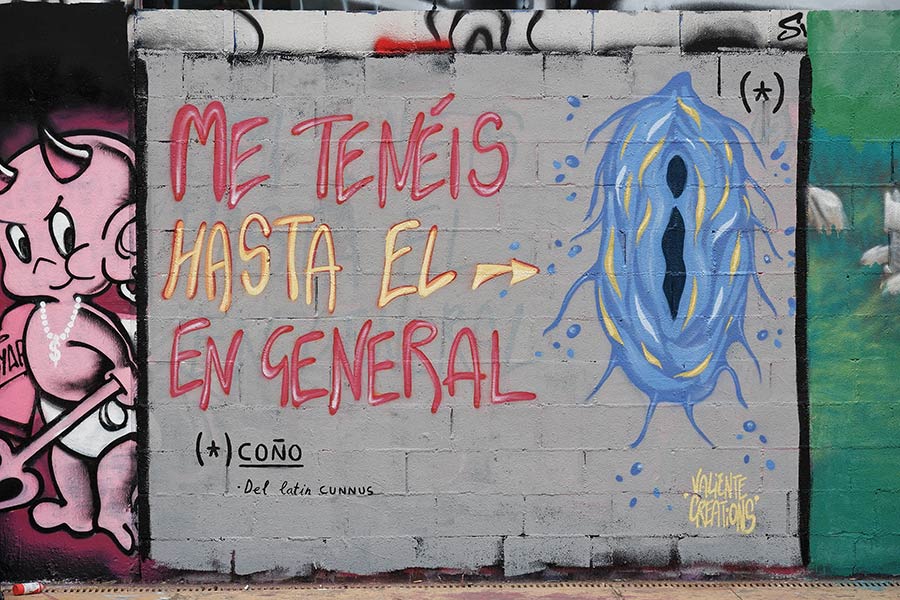
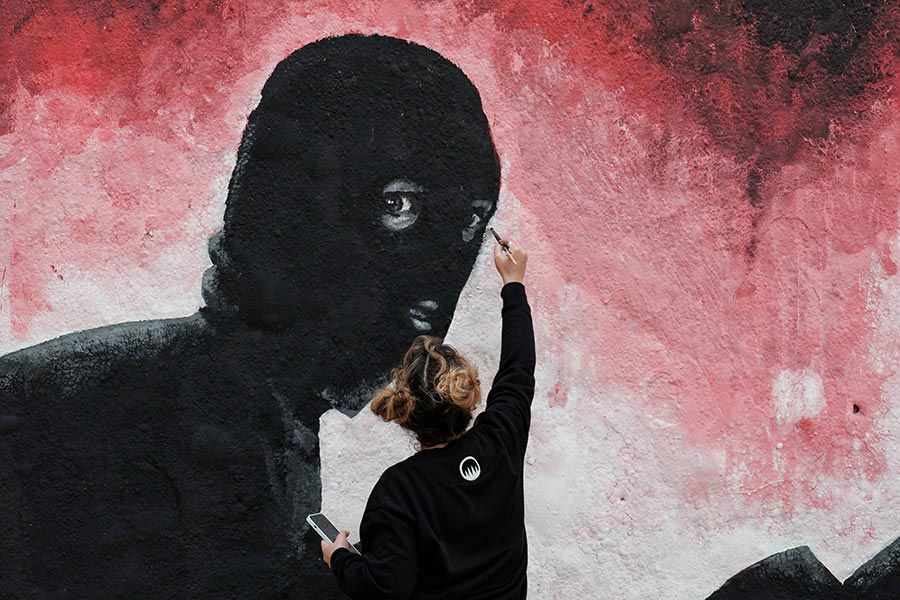
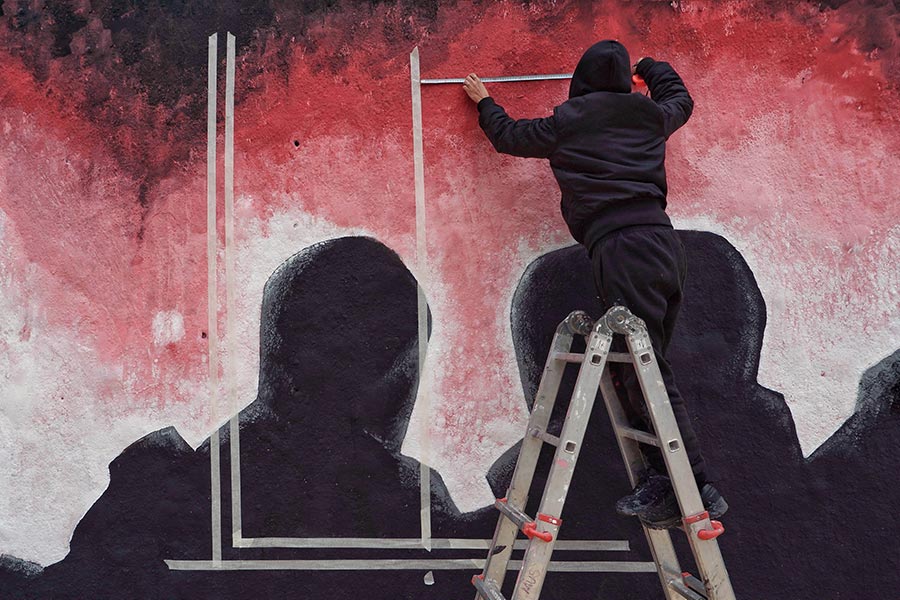
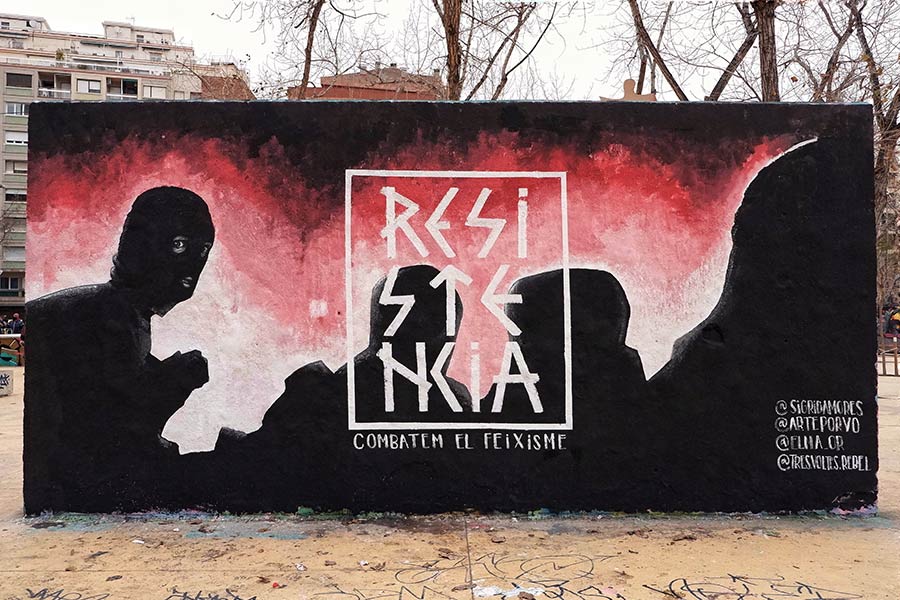
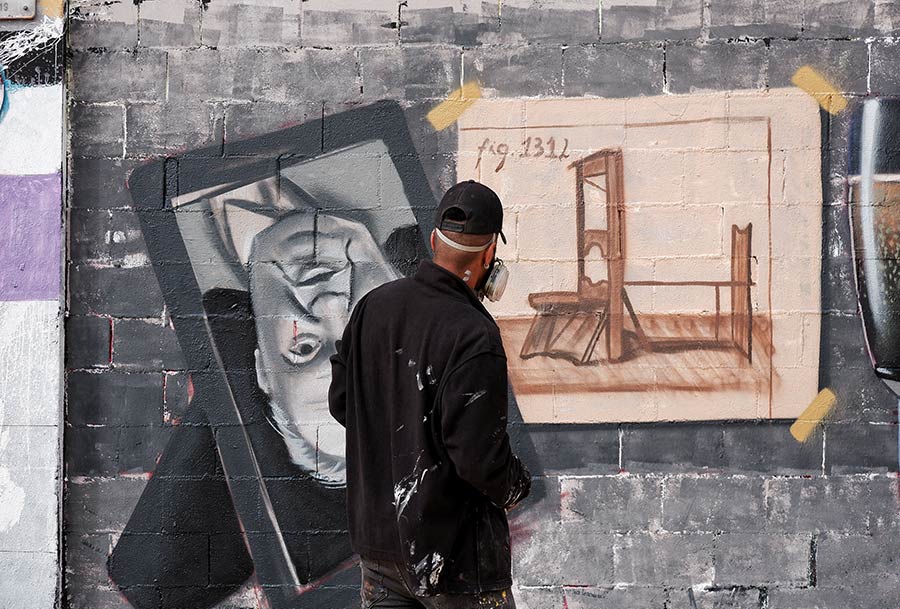
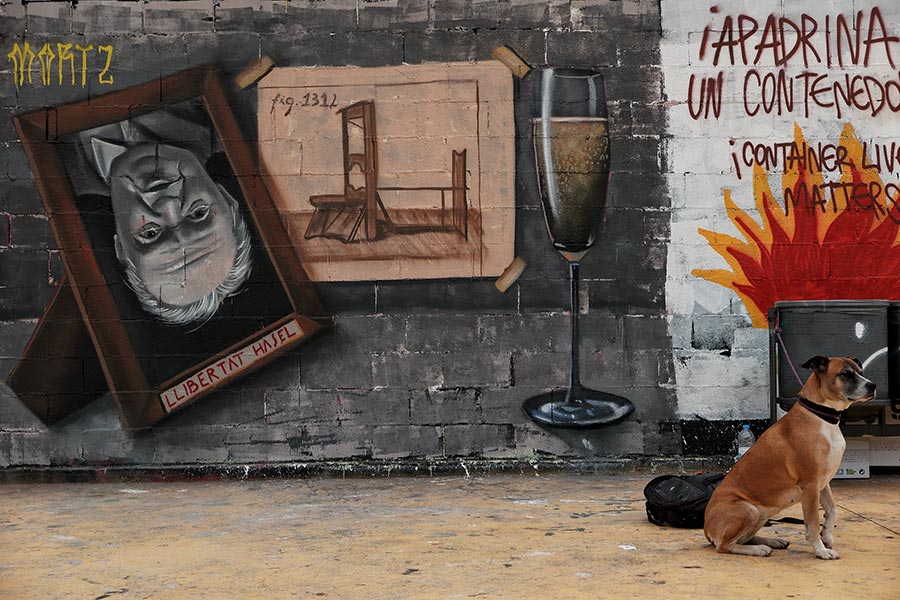
 BROOKLYN STREET ART LOVES YOU MORE EVERY DAY
BROOKLYN STREET ART LOVES YOU MORE EVERY DAY